#planet nakshatra
Explore tagged Tumblr posts
Text
Celestial Harmony Exploring Yogas in Astrology
Welcome to "Celestial Harmony: Exploring Yogas in Astrology," a comprehensive guide that unveils the mystique of yogas in the celestial realm. Astrology, an ancient art and science, goes beyond mere horoscope readings; it delves into intricate combinations known as yogas, shaping destinies and influencing lives. In this enlightening journey, we'll explore the cosmic dance of planets, unlocking the secrets of yogas and their profound impact on our existence.
Chapter 1: "The Foundation of Yogas"
Delve into the basics of yogas, understanding how celestial bodies align to create unique combinations. Explore the significance of planetary positions and their influence on individual charts. Uncover the foundation that sets the stage for the intricate yogic patterns governing our lives.
Chapter 2: "Yogas Affecting Personality Traits"
Embark on a journey through the cosmos to discover yogas shaping personality traits. From leadership qualities to artistic inclinations, delve into the cosmic blueprint that molds individuals into the unique beings they are. Gain insights into how yogas influence temperament and character.
Chapter 3: "Love and Relationships: Celestial Connections"
Explore the cosmic threads that weave the tapestry of love and relationships. Unravel the secrets of yogas governing romantic inclinations, compatibility, and the ebb and flow of emotional connections. From soulmates to karmic bonds, understand the celestial forces at play in matters of the heart.
Chapter 4: "Wealth and Prosperity Yogas"
Navigate the astral pathways leading to prosperity. Uncover the yogas influencing financial success, abundance, and material well-being. From career advancements to unexpected windfalls, explore the cosmic keys to unlocking the doors of affluence.
Chapter 5: "Health and Well-being: Celestial Vitality"
Delve into the intricate connections between celestial bodies and physical well-being. Understand how yogas contribute to health patterns, potential ailments, and overall vitality. Gain insights into preventive measures and astrological remedies for a harmonious and healthy life.
Chapter 6: "Yogas for Success and Achievements"
Unlock the celestial secrets to success and achievements. Explore the yogas that propel individuals towards their goals, shaping their destiny in professional and personal spheres. From recognition to accomplishment, understand the cosmic forces that pave the way for triumph.
Chapter 7: "Spiritual Yogas: Journey to the Divine"
Embark on a spiritual odyssey as we explore yogas guiding the path to enlightenment. Uncover the cosmic wisdom embedded in spiritual yogas, fostering a deeper connection with the divine. From inner peace to transcendent experiences, discover the celestial keys to spiritual growth.
Chapter 8: "Yogas for Transformation: Evolving with the Cosmos"
Conclude our celestial journey by exploring yogas that facilitate transformative experiences. Understand how cosmic energies contribute to personal growth, evolution, and the unfolding of one's true potential. Embrace the power of yogas for a life that aligns with the cosmic rhythm.
"Celestial Harmony: Exploring Yogas in Astrology" is not just a mini Tumblr book; it's a celestial roadmap to understanding the intricate dance of planets and their profound impact on our lives. Prepare to embark on a transformative journey through the cosmic tapestry of yogas, unlocking the secrets of your unique celestial design.
Chapter 1: "The Foundation of Yogas"
As we embark on our exploration of yogas in astrology, it's essential to grasp the fundamental principles that underpin these celestial combinations. Yogas are intricate configurations formed by the positions of planets in a birth chart, creating unique cosmic signatures. In this foundational chapter, we'll unravel the key elements that contribute to the formation of yogas and understand their significance in shaping destinies.
Astrology, an ancient science, believes that the positions of celestial bodies at the time of birth influence an individual's life journey. Yogas, in essence, are specific combinations that indicate the potential for certain outcomes or characteristics in a person's life. To comprehend this, one must first understand the basic components of a birth chart.
The birth chart, or horoscope, is a snapshot of the sky at the moment of an individual's birth. It consists of twelve houses, each representing different facets of life, and the positions of planets within these houses. Yogas are formed when specific planets occupy particular houses or form angles with each other.
In this chapter, we'll explore the significance of the Ascendant (the sign that was rising on the eastern horizon at the time of birth) and its role in shaping the individual's approach to life. The positions of the Sun and Moon, known as luminaries, will also be examined, as they play pivotal roles in determining one's core identity and emotional makeup.
Additionally, we'll delve into the concept of benefic and malefic planets—those considered favorable and unfavorable, respectively. The interplay between these celestial forces contributes to the formation of yogas that can either enhance or challenge various aspects of life.
To comprehend the foundation of yogas, it's crucial to grasp the concept of planetary dignity and debility. Planets exhibit varying degrees of strength or weakness based on their positions in the zodiac. Understanding this dynamic adds a layer of complexity to the interpretation of yogas, as the strength of planets influences their ability to manifest their effects.
As we navigate through this chapter, readers will gain a solid understanding of the astrological building blocks that lay the groundwork for the yogic tapestry. Whether you're a novice seeking insight into the cosmic influences shaping your life or an experienced astrologer refining your knowledge, "The Foundation of Yogas" sets the stage for a profound journey into the celestial realm.
Chapter 2: "Yogas Affecting Personality Traits"
In the cosmic symphony of astrology, Chapter 2 invites us to explore the enchanting melodies that shape individual personalities. "Yogas Affecting Personality Traits" unveils the intricate dance of celestial bodies, weaving a unique pattern that manifests in the diverse tapestry of human character.
At the heart of this exploration lies the Ascendant, the zodiac sign ascending on the eastern horizon at the time of birth. This pivotal point sets the stage for the individual's persona, influencing their approach to life and interaction with the world. As we journey through this chapter, we'll uncover how specific yogas involving the Ascendant can sculpt distinct personality traits.
Each planet contributes its unique energy to the personality canvas, and their placements in different houses create a kaleidoscope of characteristics. For instance, the Sun symbolizes vitality and self-expression, while the Moon reflects emotional depth and intuitive instincts. Understanding the interplay of these luminaries within the yogic framework provides profound insights into an individual's inherent nature.
The concept of planetary aspects, where planets cast their influence on one another based on their angular relationships, adds another layer to the personality portrait. Favorable aspects can enhance positive traits, fostering creativity, leadership, or intellectual prowess. Conversely, challenging aspects may present hurdles, urging individuals to overcome obstacles and grow through adversity.
This chapter will also shed light on the role of the lunar nodes, Rahu and Ketu, in shaping personality dynamics. Their influence, often associated with karmic patterns, introduces an element of destiny into the intricate dance of yogas. As we explore these nodes, we'll unravel the cosmic threads connecting past experiences with present character traits.
Furthermore, the houses occupied by specific planets hold valuable clues to the nuances of personality. From the assertiveness of Mars in the first house to the communicative flair of Mercury in the third, we'll navigate the celestial map to decipher the language of yogas influencing individual temperaments.
As readers delve into "Yogas Affecting Personality Traits," they'll gain a profound understanding of how the celestial ballet orchestrates the unique symphony of human character. Whether you seek self-discovery or aim to unravel the complexities of those around you, this chapter promises to be a captivating exploration of the cosmic influences shaping personalities. Join us on this celestial journey as we decipher the celestial codes that mold the essence of who we are.
Chapter 3: "Love and Relationships: Celestial Connections"
As we traverse the cosmic expanse of astrology, Chapter 3 beckons us into the realm of emotions and connections with "Love and Relationships: Celestial Connections." In this enchanting chapter, we unravel the celestial threads that weave the intricate tapestry of love, exploring the profound impact of yogas on matters of the heart.
At the heart of this exploration lies the seventh house, traditionally associated with partnerships and relationships. Here, yogas take center stage, influencing the dynamics of romantic entanglements, friendships, and the bonds that tie us to others. The positions of Venus and Mars, the cosmic archetypes of femininity and masculinity, play pivotal roles in shaping the romantic landscape.
We delve into yogas that indicate romantic inclinations and compatibility. From the classic conjunctions of Venus and Mars to the nuanced interplay of other planets, we explore how celestial alignments influence the chemistry between individuals. Whether it's the magnetic attraction of soulmates or the karmic ties that bind, yogas provide profound insights into the intricate dance of love.
The moon, representing emotions and receptivity, also casts its celestial glow on matters of the heart. Yogas involving the moon shed light on emotional compatibility, intuitive connections, and the ebb and flow of romantic relationships. As we navigate this celestial landscape, readers gain a deeper understanding of the emotional currents that shape the romantic journey.
This chapter doesn't merely focus on romantic love; it extends its gaze to familial and platonic connections. Yogas influencing friendships, sibling relationships, and the bonds within the broader social circle are explored, highlighting the multifaceted nature of celestial connections.
Moreover, the role of the composite chart—a combined chart representing the dynamics between two individuals—takes center stage. Yogas within the composite chart offer insights into the shared destiny, challenges, and growth potential of relationships. Whether exploring the potential for a lifelong partnership or understanding the dynamics of a friendship, the celestial signatures within this chart unveil the cosmic blueprint of connections.
"Love and Relationships: Celestial Connections" is an invitation to explore the celestial nuances that shape the most intimate facets of our lives. Whether you're navigating the complexities of romantic entanglements, seeking to deepen familial bonds, or understanding the intricacies of friendships, this chapter promises a celestial voyage into the heart of human connections. Join us as we decipher the cosmic codes that govern the dance of love in all its myriad forms.
Chapter 4: "Wealth and Prosperity Yogas"
Our celestial journey takes a fascinating turn in Chapter 4, guiding us through the astral pathways that lead to abundance and material well-being. "Wealth and Prosperity Yogas" explores the cosmic keys that unlock the doors to financial success, affluence, and the fulfillment of material aspirations.
At the core of this exploration lies the second house, traditionally associated with wealth, resources, and financial stability. As we navigate this celestial mansion, we uncover the yogas that signal financial prowess, material gain, and the potential for prosperity. Planets such as Jupiter and Venus, often regarded as benefic forces, take center stage, casting their auspicious influences on matters of wealth.
The intricate dance of yogas reveals how specific planetary positions and combinations contribute to financial success. From the auspicious conjunctions of wealth-inducing planets to the favorable aspects that enhance financial acumen, we unravel the celestial secrets guiding individuals toward abundance.
The role of the eleventh house, known as the house of gains, also comes into focus. Yogas associated with this house illuminate avenues for income, windfalls, and unexpected financial benefits. Whether it's through entrepreneurial ventures, investments, or fortuitous opportunities, the cosmic alignments within this chapter provide valuable insights into the pathways leading to prosperity.
Moreover, the concept of Dhan Yoga, a combination of planets promising financial gains, unfolds as a celestial blueprint for material success. Readers will gain a deeper understanding of how yogas involving planets like Mercury, Jupiter, and Venus contribute to financial stability and affluence.
Astrological remedies for enhancing financial well-being become an integral part of this chapter. From gemstones to specific rituals, we explore the cosmic tools that individuals can employ to align themselves with the celestial energies conducive to prosperity. This practical dimension adds depth to the exploration, offering readers actionable insights to enhance their financial trajectory.
"Wealth and Prosperity Yogas" is more than a chapter; it's a celestial guide to navigating the pathways of abundance. Whether you seek financial success, wish to optimize your investment strategies, or simply desire a deeper understanding of the cosmic influences on material well-being, this chapter promises a rich exploration of the celestial keys to prosperity. Join us as we decode the cosmic map leading to financial fulfillment and prosperity.
Chapter 5: "Health and Well-being: Celestial Vitality"
In Chapter 5, our celestial odyssey turns inward as we explore the intricate connections between the cosmos and physical well-being. "Health and Well-being: Celestial Vitality" unveils the cosmic influences that shape individual health patterns, potential ailments, and the overall vitality encoded in the celestial blueprint.
The sixth house, traditionally associated with health and wellness, takes center stage in this chapter. As we navigate the cosmic terrain of this house, we unravel the yogas that signify physical robustness or susceptibility to health challenges. Planets such as Jupiter, the natural significator of health, and the moon, representing the emotional and physical rhythms, play pivotal roles in shaping the health narrative.
Our exploration extends to the concept of Ayur Yoga, which sheds light on the length and quality of life based on the planetary configurations within the birth chart. By examining the positions of benefic and malefic planets, we gain insights into the potential for longevity and the specific health challenges that may arise.
Moreover, the influence of the Ascendant and the first house becomes paramount in understanding an individual's vitality and overall constitution. Specific yogas involving the Ascendant can indicate inherent strength or vulnerabilities, offering a celestial roadmap to proactive health management.
As we delve into the celestial aspects affecting health, the role of the eighth house, traditionally associated with longevity and transformative experiences, comes into focus. Yogas within this house provide deeper insights into the potential for rejuvenation, healing, or transformative experiences that impact one's well-being.
This chapter doesn't merely illuminate potential health challenges; it also introduces astrological remedies and practices that individuals can adopt to enhance their vitality. From dietary recommendations aligned with celestial energies to specific yogic practices, readers gain practical insights into optimizing their well-being through astrology.
"Health and Well-being: Celestial Vitality" is an invitation to explore the intricate dance between celestial energies and the physical vessel. Whether you seek insights into potential health challenges, aim to cultivate a healthier lifestyle, or desire a holistic approach to well-being, this chapter promises a celestial journey into the realm of vitality. Join us as we decode the cosmic signatures that shape the intricate tapestry of health and well-being.
Chapter 6: "Yogas for Success and Achievements"
In Chapter 6, our exploration ascends to new heights as we unravel the celestial secrets that propel individuals toward success and accomplishments. "Yogas for Success and Achievements" invites readers to decipher the cosmic codes that shape destinies in both professional and personal spheres.
The tenth house, traditionally associated with career and achievements, takes center stage in this cosmic narrative. As we navigate the celestial pathways of this house, we uncover the yogas that signify career elevation, recognition, and the potential for notable accomplishments. Planets such as Saturn and Mars, regarded as indicators of career prowess and ambition, play crucial roles in shaping the narrative of success.
Our exploration extends to the concept of Raj Yoga, which signifies the royal combinations that elevate individuals to positions of authority and influence. By decoding the planetary alignments contributing to Raj Yoga, readers gain insights into the potential for leadership, recognition, and the fulfillment of ambitions.
Moreover, the interplay between the second and eleventh houses reveals the cosmic keys to financial success as an integral part of one's overall achievements. This chapter provides a comprehensive view of how material prosperity intertwines with career accomplishments, creating a holistic understanding of success in the astrological context.
The role of benefic planets, particularly Jupiter, becomes paramount in this chapter, signifying the cosmic blessings that pave the way for success. Specific yogas involving Jupiter offer insights into the potential for expansion, growth, and the fulfillment of one's aspirations.
As we delve into the celestial aspects affecting success, the significance of the Midheaven (MC) and the Sun takes prominence. Yogas involving these celestial bodies shed light on an individual's public image, career trajectory, and the potential for attaining a position of influence.
This chapter isn't merely a guide to recognizing success yogas; it also explores astrological remedies and practices that individuals can adopt to enhance their path to achievement. From aligning with auspicious planetary energies to embracing specific rituals, readers gain practical insights into optimizing their journey toward success.
"Yogas for Success and Achievements" is more than a chapter; it's a celestial roadmap guiding individuals toward the pinnacle of their endeavors. Whether you seek professional recognition, aspire to fulfill personal goals, or desire a deeper understanding of the cosmic forces influencing success, this chapter promises a captivating exploration of the celestial keys to achievement. Join us as we decipher the cosmic signatures that shape the tapestry of success and accomplishments.
Chapter 7: "Spiritual Yogas: Journey to the Divine"
Chapter 7 invites readers to embark on a transcendent odyssey as we delve into the celestial tapestry of "Spiritual Yogas: Journey to the Divine." In this chapter, we unravel the cosmic threads that guide individuals on a profound exploration of spiritual growth, inner peace, and the divine connection within.
The twelfth house, traditionally associated with spirituality and transcendence, takes center stage in this celestial narrative. As we navigate the ethereal realms of this house, we uncover the yogas that signify a predisposition toward spiritual pursuits, contemplation, and the potential for enlightenment. Planets such as Neptune and Jupiter, considered spiritual significators, play pivotal roles in shaping the spiritual landscape.
Our exploration extends to the concept of Moksha Yoga, which signifies the combinations that lead individuals toward liberation and a deeper connection with the divine. By deciphering the planetary alignments contributing to Moksha Yoga, readers gain insights into the potential for inner transformation, self-realization, and the journey toward spiritual enlightenment.
Moreover, the interplay between the ninth house and the luminaries—Sun and Moon—reveals the cosmic keys to philosophical inclinations and the quest for higher knowledge. This chapter provides a comprehensive view of how the pursuit of wisdom intertwines with the spiritual journey, creating a holistic understanding of the path to the divine.
The significance of meditation and introspection becomes paramount in this chapter, offering practical insights into enhancing one's spiritual connection. Yogas involving specific meditation practices and spiritual disciplines illuminate the pathways to inner peace, mindfulness, and the discovery of the divine within.
As we delve into the celestial aspects affecting spiritual growth, the role of the lunar nodes, Rahu and Ketu, takes prominence. Yogas involving these nodes offer insights into karmic patterns, life lessons, and the transformative experiences that contribute to spiritual evolution.
This chapter isn't merely a guide to recognizing spiritual yogas; it also explores practical steps and rituals that individuals can adopt to enhance their spiritual journey. From embracing meditation practices aligned with celestial energies to engaging in acts of compassion, readers gain actionable insights into nurturing their connection with the divine.
"Spiritual Yogas: Journey to the Divine" is an invitation to explore the boundless realms of the spirit. Whether you are on a quest for inner peace, seeking to deepen your spiritual practices, or desiring a profound connection with the divine, this chapter promises a celestial voyage into the heart of spiritual awakening. Join us as we decipher the cosmic signatures that illuminate the path to the divine within.
Chapter 8: "Yogas for Transformation: Evolving with the Cosmos"
In the concluding chapter of our celestial journey, we venture into the transformative realms of "Yogas for Transformation: Evolving with the Cosmos." This chapter serves as a celestial guide, unraveling the cosmic secrets that facilitate personal growth, evolution, and the unfolding of one's true potential.
The eighth house, traditionally associated with transformations and rebirth, takes center stage in this chapter. As we traverse the metaphysical landscapes of this house, we unravel the yogas that signify the potential for profound metamorphosis, inner renewal, and a transformative journey. Planets such as Pluto and Saturn, heralds of change and maturity, play pivotal roles in shaping the transformative narrative.
Our exploration extends to the concept of Kundalini Yoga, symbolizing the awakening of the spiritual energy within. By deciphering the planetary alignments contributing to Kundalini Yoga, readers gain insights into the potential for heightened awareness, spiritual awakening, and the transformative power that resides within.
Moreover, the interplay between the fourth house and the moon reveals the cosmic keys to emotional healing and the nurturing of a secure inner foundation. This chapter provides a comprehensive view of how emotional well-being intertwines with the transformative journey, creating a holistic understanding of the path to personal evolution.
The significance of embracing change and adapting to the ebb and flow of cosmic energies becomes paramount in this chapter. Yogas involving specific planetary transitions and celestial events offer insights into the cyclical nature of transformation, encouraging readers to embrace the evolving dance with the cosmos.
As we delve into the celestial aspects affecting personal growth, the role of Chiron—often known as the "wounded healer"—takes prominence. Yogas involving Chiron offer insights into the healing potential within wounds, the transformative power of challenges, and the journey toward wholeness.
This chapter isn't merely a guide to recognizing transformative yogas; it also explores practical steps and perspectives that individuals can adopt to embrace personal evolution. From cultivating resilience in the face of challenges to understanding the cyclical nature of transformation, readers gain actionable insights into navigating the ever-changing cosmic currents.
"Yogas for Transformation: Evolving with the Cosmos" is an invitation to embark on a dynamic journey of personal growth. Whether you are navigating life changes, seeking to understand the transformative power within challenges, or desiring a roadmap for evolution, this chapter promises a celestial voyage into the heart of self-discovery. Join us as we decipher the cosmic signatures that illuminate the path to transformative growth and the unfolding of your true potential.
(Recap)
As we conclude our celestial odyssey through the intricate tapestry of "Celestial Harmony: Exploring Yogas in Astrology," we find ourselves at the intersection of cosmic wisdom and personal revelation. This journey, spanning eight chapters, has been a celestial roadmap—a guide to understanding the nuanced dance of planets and their profound impact on our lives.
From the foundational principles in "The Foundation of Yogas," where we deciphered the astrological building blocks, to the transformative realms of "Yogas for Transformation," where we explored the potential for profound metamorphosis, each chapter has been a gateway into a different facet of our celestial design.
In "Harmony Unveiled," we reflect on the interconnected themes woven throughout this exploration. The celestial influences on personality, relationships, wealth, health, success, spirituality, and transformation are not isolated threads but integral components of a harmonious cosmic symphony. We've uncovered the celestial keys to self-discovery, providing insights into the multifaceted layers of our existence.
The invitation presented in this journey extends beyond the pages of a book; it's an invitation to embrace your celestial design consciously. The yogas unveiled within these chapters are not deterministic scripts but rather guideposts, offering profound insights into the energies at play in your life. They empower you to navigate challenges, harness opportunities, and align with the cosmic rhythm.
As we close this celestial volume, let the wisdom gained be a lantern on your path. Whether you are a seeker on the road to self-discovery, an astrologer refining your craft, or an individual curious about the celestial forces shaping your journey, may "Celestial Harmony" be a companion in your quest for understanding.
In the grand tapestry of existence, the celestial influences are but threads, and you, the weaver of your destiny. "Celestial Harmony" is an ode to the dance of planets, a cosmic melody inviting you to join the rhythm. As you navigate the harmonies of your life, may the wisdom gleaned from these chapters guide you towards a profound sense of alignment, purpose, and ultimately, harmony with the cosmos.
Follow our Facebook page Mage Magic Touch for personal consultations https://www.facebook.com/profile.php?id=61565561190268
#astrology#astrology facts#astrology observations#vedic astrology#astro community#planet nakshatra#conjunction#astrologer#astro notes#astrology readings#astro observations#astrology community#12th house#solar return#sidereal astrology#astroblr#birth chart#vedic astro notes#vedic astro observations#vedicknowledge#vedic mythology#jyotish#nakshatras#spirituality#meditation#inner peace#inner thoughts#innerstrength#self love
27 notes
·
View notes
Text
How women influenced by different planets act in one-on-one relationships
Platonic, familial and/or romantic. Based on my own observations and traditional associations💕 planetary influence is present when a native has one or more nakshatras ruled by that planet in their big three(moon, ascendant, sun). If that or any other planet is conjunct sun, moon or ascendant in the chart, then it also adds its influence, but to a much lesser degree. I'd advise to read for your moon, but as always, use discernment and and do not take this information at face value.
Sun women
Krittika, Uttara Phalguni, Uttara Ashadha
The women ruled by the Sun are often seen as confident, self-possesed, bright, expressive and measured.
The Sun is well-known to be a masculine planet, that does not make sun-ruled women any less worthy in their femininity.
Sun women might be surrounded by a lot of male energy in younger years. It could have been positive or negative but all in all, they're familiar and quite comfortable with it. I don't mean they were plagued by admirers, I moreso mean they had a father figure, uncles, brothers/male cousins(usually older), male friends around them. I might be wrong but I've seen this so much in real life and in art. If that's not the case, then they can fit in and hold their own in a group of men. It's true that they're not phased by trying to be more masculine themselves(like jupiter women do sometimes) or to completely lean into traditional femininity(like moon women). They usually get love and support from men that have doubted them at first.
That leaves sun girls with an abundance of masculine energy absorbed in themselves. In one-on-one relationships they enjoy a level of independence but they value loyalty immensely. They build relationships on certain rules that come from their personal values. They look for a partner in crime and an understanding confidante more than anything else.
That's why saturn-ruled people are best for them, along with other sun-ruled individuals. Ruled by the planet of dedication and longevity, Saturn dominants understand their detachment and fixed nature, and provide the cold, hard structure for their self-expression.
Their energy is not for abuse though. They are more vulnerable and sensitive than most realize. As they are women influenced by a very masculine planet, they might feel like they're giving too much sometimes, like they're being taken for granted. As Saturn is the planet that never takes anything for granted and works for its rewards, it is not going to discard Sun's warm and "life-giving" nature. Moreover, it is going to appreciate it, respect it and try to keep up with it as best as it can. Saturn's cool and careful nature is soothing to Sun women, making them feel safe to lean into their individuality with more confidence while prividing the essential balance for a full existence.
Moon women
Rohini, Hasta, Shravana
Moon women have a simplicity about them. Traditionally a feminine planet, moon is considered to be a soft, smooth and nurturing influence.
Moon women are easy to recognize. Moon is probably the most dependant planet. They are passive in their demeanor and easily absorb influence. They often have a group of people around them, if not a group, then at least or not two, just because. That can be explained by moon's receptive but also giving nature, that gives back the smoothed, mixed essence of what it has recieved that is easily digestible. But they don't have that energy within them. They can be very accomodating while not initiating anything at all. If they do initiate, it's something similar to what the other person has initiated.
So moon thrives on dependancy. They might enjoy groups, because that way their passivity and receptivity is not held against them, and they might feel like they contribute more that way. In one-on-one relationships, they are very easy and simple, but might become stressed and on edge. Moon rules masses and the subconcious, so they need an energetically abundant planet that does not mind being drained.
Moon is, in its essence, is vampiric, so they like Sun people. They might be quite comfortable around Jupiter people, and sometimes, with Venus people(the Shravana- Purva Ashadha pairing works particularly well).
Mercury women
Ashlesha, Jyeshta, Revati
Mercury is the planet of integration and manipulation, and women ruled by it are often multi-faceted, containing the potential for adapting and the willingness to to often do so.
Mercury can be described as the "hermaphrodite" sometimes, especially Revati nakshatra. Due to this highly analytical and adaptible nature, mercury women have the ability to morph themselves into different roles, depending on who they are interacting with. Their feminine energy is based on receiving and then skillfully using whatever is given to it. Mercury is the planet that is quite different in all three of its nakshatra stages. Ashlesha, Jyeshta and Revati all have different feminine qualities, due to the three stages that they wrap up being different from each other. Venus nakshatras are different from each other too, but to a lesser degree. What all mercury nakshatras do have in common is sensitivity and skill. They change and adapt to various envirmonments, and their resourcefulness is seemingly limitless.
In one-on-one relationships they need people who can handle that "manipulative" and "nervous" nature. All yoni consorts of mercury nakshatras(Punarvasu, Anuradha, Bharani) have a theme of passivity, they all want and need that "manipulative" energy. Similarly, Mercury women themselves can thrive with people who are energetically stable/abundant but want to move and adapt. Since Mercury women have a need for stimulation and variety, they maintain relationships with people who they don't find boring AND can provide loyalty. There is no single planetary energy that is generally compatible with Mercury people, but Venus and Mercury are traditionally friends, and Venus also heals Mercury. The best example of this is Revati and Bharani(elephant yonis), but other combinations can be compatible too(except Ashlesha and Purva Phalguni, due to them being enemy yonis).
Venus women
Bharani, Purva Phalguni, Purva Ashadha
Venus_ the planet of beauty, sensuality and love is a well-known feminine force that is almost synonymous with the word.
Venus women are, before anything, choosy and exclusive. Their taste is very specific and particular, and whatever is "theirs", is theirs completely. Despite the outward serenity and composure, their internal nature is very fierce and even ruthless. That discriminating nature extends to everything in their life, where they have to be clear about the dividing lines of everything that they deem worthy, and everything else that they don't. There is also an inner drive to attain what they want/need/desire/love.
Their views on one-on-one relationships are unique, and they have very high standards, along with an attentive and giving nature. A lot of those relationships might have left them dissapointed. They seek a balanced give and take in any 1-1 bond. They might even blame themselves for not choosing correctly, since they're already very careful. They mainly want loyalty and support. As always, those relationships have to fulfill their personal desires. Someone considerate, attentive, and skilled is best for them.
There is no single planet type that will fulfill all three Venus nakshatras and most of their natives, but generally, Mercury people have what it takes to impress and keep them. They share a discriminating nature, but while Venus women are energetically abundant, loving and often passive(on 1-1), Mercury is actively "manipulative" and morphing into whatever Venus desires. The best version of this is Bharani and Revati(elephant yonis). Purva Phalguni feels best with Magha(rat yonis) and most likely will not get along with Mercurial Ashlesha(enemy cat yoni). Purva Ashadha is best with Shravana(vanar yonis). All Venusian lunar mansions are best with their uniquely preffered nakshatras. Besides them, they might form friendships with Ketu, Sun, Jupiter or Saturn nakshatras (with the exlusion of Purva Ashadha- Krittika/Pushya, Bharani-P.Bhadrapada and Purva Phalguni-Punarvasu pairs).
Mars women
Mrigashira, Chitra, Dhanishta
Mars_ the warrior planet that grants protection has been a symbol of masculinity since ancient times. That coorelation, although undeniable, does not exactly encompass the whole essence of that force, especially while considering women influenced by it.
Mars rules the energetic output_ how we spend our energy and life force. In many ways, Mars women, being the passive/feminine vessels for that triggering energy, are expressive and engaging. But unlike Mercury, that expression is geared towards the physical body. Unlike Venus, they do not have any inner discriminatory preferences that might make them that choosy. Their expression is very outward and shown on the surface, so while they can be confrontational or agitating with how they behave, they do it for protection, because that it their only mechanism of doing so.
Their heated but inwardly quite gentle nature can make them susceptible to unnecessary drainage. That's why they're another planet type that needs a giving person in 1-1 relationships. With them, that person has to not only give, but have a true consideration of their sensitivity.
Jupiter people are famously best for these women. Jupiter natives can give their excess energy to them and ensure that their vulnerabilities are not abused. The two latter Mars nakshatras both have Jupiter nakshatras as yoni consorts and Mrigashira's yoni consort is Rohini_ a fixed but soft-natured nakshatra.
Jupiter women
Punarvasu, Vishakha, Purva Bhadrapada
Women ruled by the great benefic, the planet of greatness, plenty and godhood can be big personalities. Jupiter has seemingly infinite energy that wants to give without end, and often, they do.
Jupiter women have a very enthusiastic, almost aggressive niceness about them. They might have been surrounded and influenced by male energy since their early life like Sun women, but their true feminine power comes from being open while giving and receiving, especially when around individuals who they think need their "help" the most.
Jupiter women are the one planet type that feel the best in groups, even moreso than lunar women, and unlike them, since Jupiter wants to give to all, they might feel very uncomfortable in 1-1 relationships. That being said, they're not exactly opposed to the idea of it.
They will feel best with heated and draining planets, especially Mars. Mars can take Jupiter's abundant energy and use it to build and protect. They're famously a good pair, but other planet types can be just as compatible with Jupiter. Ketu people also have a desire to take Jupiter's energy but unlike Mars, they won't drain it to use it outwardly, instead, they'll absorb the energy completely and integrate it into their spiritual essence. The exception would be Punarvasu(Cat yoni) and Magha(Rat yoni), because of enmity between yoni animals.
Besides them, Punarvasu nakshatra in particular will get along with Ashleshas, a Mercury nakshatra, due to them being yoni consorts (cat yonis).
Saturn women
Pushya, Anuradha, Uttara Bhadrapada
The cold planet of control and restraint is a passive but tough and unbreakable force. Saturn women find their femininity in stillness and silent, but resilient passivity.
Their strength is tested and it gains more layers through time. This kind of energy might become impossible to intimidate, so many might feel that Saturn women are never phased by life in general. More reactive or moldable people might distance themselves from them, even though on paper Saturn women are easy to like.
They find too much flux and chaos unbearable. Saturn's femininity is all about limiting and crystalizing whatever it receives, so the more stable that energy, the better Saturn women might manage in binding it, even though they can restrain and control any type of energy, no matter how messy.
Saturn ruled women might have dealt with a harsh, limiting, authoritative feminine energy in their younger years. They have learned how to manage themselves in various complicated situations. What they seek in 1-1 relationships is trust and loyalty, not too unlike Sun women. Saturn people are best with Sun people. Sun's warm influence will give their structure a heart and a "purpose". Sun is the planet that seeks out the cold, restraining influence of Saturn that matches its own stability and self-possession.
Since these women are the feminine variation of Saturnian energy, they might be extremely passive and unwilling to start anything themselves, but after they have something to hold onto, they can become actively bossy.
The similarly cold but also adaptable and changeable nature of Mercury might also be an easy and natural match for Saturn women. This pairing might be best in platonic or familial relationships, but the Anuradha-Jyeshta pair(rabbit yonis) is perfect in romantic couples too.
Rahu women
Ardra, Swati, Shatabhisha.
The north node of the moon, the dragon's/serpent's head is a shadow planet and only one half of the opposition that makes up the destiny of a person. The nodes are dependant on each other, and both of them are dependant on the moon. Even this fact gives them a very different kind of quality and essence. So, women ruled by them are a distinctive and very draining group of force.
Rahu women are the personifications of the illusion. For them it is easy to see and identify, to box and to define and label. They are adaptable, responsive, cerebral. There is a certain numb neutrality about them. They are very aware of and immersed in the material world. They can often become bored or overwhelmed by it. It is not unknown that Rahu ruled individuals might be prone to nervousness and anxiety.
Rahu women are easily susceptible to all kinds of influences, just because they absorb and then project everything around them. They can adopt behaviors from other people without noticing, but unlike Moon women(who also do this) they do not give anything back to anyone in particular, they just take it into their illusion and show it to everyone.
That is why they can be quite comfortable within groups. With personal, 1-1 relationships, difficulties can arise. They need a very particular kind of person that can handle their tense and sometimes chaotic nature and can direct their "hyper" essence towards something stable.
Ketu is the other half of Rahu and the only planet that can calm it down. The immovable and hot nature of its opposite shadow planet can help Rahu get out of the head stop its often actively paranoid behavior. Ketu can provide the spiritual substance for Rahu's material manifestations and can match its cold, active and outwardly discharging energy with its own heated, passive and absorbing essence. Obviously, the two pairs of them are yoni consorts, with Ardra(dog yoni) and Shatabhisha(Horse yoni) having Mula and Ashwini as yoni consorts, respectively. Swati can also easily get along with Ketu people, but Ashwini(enemy yoni) might be the exception. For Swati, the best match is its own yoni consort(buffalo yoni)_ Hasta, a very earthy nakshatra.
Besides Ketu, Rahu people can be very drawn to Sun people. Mythologically, Rahu always seeks to eclipse the Sun_ another discharging and active planet, the one that it wants to imitate. If, for example, a Rahu person also has a Ketu influence, due to already having that Rahu-Ketu balance, they might prefer Sun individuals who emanate that warm light from within themselves. In platonic relationships, Rahu people might find kinship with Jupiter individuals with whom they share an adaptible and "airy" nature, but can give their abundant energy to draining and discharing Rahu.
Ketu women
Ashwini, Magha, Mula
The other half of the dragon, the tail/body of the serpent, the absorbing shadow that rules over the past of the person. Also a shadow planet that drains and depletes, Ketu is the "conquerer" that establishes the very essence of a person or a thing. It is where an individual can find their true power, but also where there is a potential for great danger.
Ketu women are a very raw example of femininity. Their basic nature and behavior is the representation of femininity in possibly its simplest light. They absorb everything around them and instead of doing anything at all, they integrate it into their internal selves. Their power is their passivity. Their energy resembles a black hole_ a seemingly endless void that never seems to be satisfied.
They too have a numbness in them, but unlike Rahu, Ketu women might become overwhelmed with their own stagnant and heavy energy, struggling to properly express or define what they are, feel and know. Rahu can become confused from too much information, Ketu can become confused from a lack of it. In the end, they both might feel like they are missing whatever the other is/has. There is also a blindness to both of them, where each sees only their opposite side. But Ketu knows what it knows, and unlike Rahu, it does have stability. The danger with them is stubbornness, the inability to be moved by the outside.
Ultimately, Rahu people are the best match for them. Ketu women can be overly passive* and unresponsive in most 1-1 relationships. They can "hide" and assimilate better in groups but with just one another person they can become extremely disinterested, if the other is not on par with them. Rahu can break its stagnancy and help Ketu women to push their energy outwards.
Besides Rahu individuals, Ketu women might be compatible with Jupiter people, since they have an abundance of excess energy that can give to Ketu's hungry and absorbing nature. Ketu also heals Jupiter. Another dynamic that is possibly compatible for them is with Mars-ruled individuals, due to Mars and Ketu being similar in nature, but this might work best in platonic relationships.
*the passivity of Ketu is not displayed in an obvious way, at least, not all the time. By passivity I meant that it's very hard for them look outside of what they know and have decided. Their behavior might actually look very expressive and reactive, especially Ashwini's and Mula's. Ketu is the conqueror because it simply goes and acts without thinking. It's pure instinct. What it lacks though is the rational mind and awareness. In real life natives, this can manifest as willful or unintentional "ignorance", or simply intense self-focus that does not really allow outside input. With Ashwini, getting their way is a matter of protection, existence and survival, and their "ignorance" is the most unintentional out of all Ketu nakshatras. With Magha, it's about their sense of self-worth and influence. With Mula, it's about their core beliefs and an establishment of the ultimate truth. I think Ashwinis are mostly unintentional, Maghas don't even care to even look at that, and Mulas are aware of their "ignorance" but recognize the necessity of self-focus for their own basic sanity.
#vedic astrology observations#vedic tumblr#vedic#vedic astro observations#vedic astrology#vedic astro notes#vedic chart#astrology#planets#sun#moon#venus#mercury#mars#saturn#jupiter#rahu#ketu#nakshatras#sidereal astrology#astrology tumblr#astrology observations#astroblr#astrology blog#venusian women
1K notes
·
View notes
Text
Astro Observations-6💪
Helllooo! Here we go with Part-6 🤗 Feel free to comment down your thoughts/experiences💅💃
(These observations are based on the whole sign system, sidereal charts and all obs are subject to change with other aspects in the chart, so don't conclude anything with a single placement) ❤
Ascendant Lord in Cardinal signs can mean that the person has control over their mind and thoughts. They always have the tendency to focus on the brighter side of everything and are not easily influenced by anyone. They do what they decide to and unwaveringly stick to it.💪
Ascendant in Mrigashira, Chitra and Dhanishta - They can be short tempered and take hasty decisions. They're driven by emotions, making them prone to react based on their current emotions and regret it later. This can apply to 1H mars too.🤯
Mercury-Rahu conjunction (within 5 degrees) in 3/6/8/12H---Pls be careful on the internet. These placements can be affected by cybercrime issues. This could happen based on the house themes, not necessarily for everyone, just a reminder to stay safe sweeties.👩💻
Rahu in asc or in conjunction with ascendant lord - Delulu pro max placement fr. They be having a whole different world in their mind or acting like they have multiple personalities. It's so hard to read them, no matter how many yrs you spend with them, you'll still be wondering how they would react or what they would say for a particular situation. They shed their personality or remold it frequently that they feel like a whole different person within short spans of time. 🐍
Venus-Saturn conjunction in 12H especially for Gemini and Scorpio ascendants - Their first heartbreak would be insane. They could've got to the point of engagement or in a long term relationship, so used to each other and never would've imagined a breakup but it would strike them so hard one fine day, they would've pictured and planned their whole life with that person. This placement can give an unexpected, absolutely shattering kind of heartbreak in their first love.🤧
Dhanishta Moon- Conflicts with their mom. Mom could often use emotional blackmail as a weapon or leave the household often if it's in 8/9/12H.😬
11H lord in Ardra, Swati or Shatabisha- Friendships you get can be totally different from what you've expected. The friend you loved so much can surprisingly show their true colors and betray you whereas the person you didn't even like to interact with at first could become your loyal confidants. Forget getting like minded friends, you'll get the type of friends who will motivate you to be more open minded, teach you controversial/ type of stuff that doesn't go along with the conservative or large scale population. Whether they're a bad influence or good influence depends on the 11H lord.💯
Mars in 6-8 Alignment synastry (ie. If their mars is in 8H when counted from your mars, yours will be in 6H when counted from their mars)--The physical attraction is eternal and this could also be someone you'll have your first time with. The lust part will be never ending, if there are other long term aspects, this couple could turn out to be the ones having the same libido & yearning as before kind of physical intimacy even after manyyy yearrsss. As this alignment includes 6H too, the frequency will be high as 6H indicates routine.💀
Jupiter in Domicile/Exalted house in D9 in Woman's chart- Partner will suit your type so perfectly, it will feel like you've manifested the type of person you wished for. The downside is the qualities you wished for will be overexpressed, which can be a problem sometimes. If u wished for a kind hearted and helping person, they could be so much that they give out hefty checks out for donations, you could feel that the amount is unnecessarily high. They're what you wished for, you know that but sometimes it's too much and feels overwhelming or troublesome to handle.💖
Venus-Ketu conjunction in 12H-Especially in capricorn or aquarius can lead to unrequited love. They can be in delulu love for so many years and obsessed with them. They just want that one person and no one else, they would start to understand the reality that this is going nowhere only around 25yrs old. Guys, you deserve better wake up!🤗
This should be carefully analyzed- If your 11H or it's lord is stronger than 7H or it's lord, it can lead to a second marriage or multiple love affairs.😌
Venus in 2H (In Leo/Libra)- The type of ppl to woo the opposite gender by their flirtatious and spontaneous talks. They tend to spend a lot on their partners, the type of spending can be based on the naks. Magha venus can buy antique or unique products for their partners, they focus more on the status a specific gift shows rather than it's utility. Purva phalguni venus would buy a lot for themselves too and they would love joint assets, gifts that can be shared between the couple, like a luxury car or just a unisex branded hoodie. Vishaka venus would be the partners who take their better half on a shopping spree and let them buy anything for themselves, they mostly would like to leave the choice to their partner.💝
Let's Learn and Grow Together!💅💋
With Love-Yashi ❤⚡

Masterlist💖
#astrology#astroblr#sidereal zodiac#astro observations#blogs#astro placements#birth chart#natal chart#astro community#astro notes#vedic astro observations#planets#sidereal chart#sidereal astrology#vedic astrology observations#vedic chart#vedic astrology#vedic astro notes#whole signs#zodiac stuff#astrology notes#ascendant#rahu ketu#venus#dhanishta#chitra nakshatra#shatabhisha#mrigashira#ardra#swati nakshatra
339 notes
·
View notes
Text
Planets in 7th house.
The mirror of self
Sun in 7th house
🌻The personality with Sun in 7th house wishes to know itself, it's identity through the mirror of others. It deeply searches for its own identity, essence , value in the definitions , thoughts , feelings of others about them.
🌻It finds completion and true fulfillment in the company of its beloved .
🌻Can be very self sacrificing or can have ego issues . Balancing is the key. Do something creative everyday. So that you are more dependent on yourself.
🌻Looks for a radiant, confident , regal , creative partner , why ? Because he is looking for his unconscious part to become conscious in the material life.

Moon in the 7th House
💚Here the personality desires the reflection & experience of an instinctive , beautiful, intuitive , beautiful, feeling , emotionally intelligent, emotionally attuned , nurturing partner .
💚In her , he finds his reflection of his emotional needs , in her , he learns about his emotions , the care , devotion , emotional attunement he wishes to get is the unconscious reflection of his anima.
💚The unconscious childhood enactment with mother is wished for to reach a sense of completion within.
💚A tendency of neediness and codependence can form sometimes.
💚Moodiness and nourishment happen in waves.
💚Developing a consistent spiritual practice will help beautifully balance this placement.
💚Emotionally attuned soulful relationship can happen if the personality learns to focus his attention of himself, his beloved , his spiritual practice & stays loyal.
💚Moon related business will also bhi helpful.
Mercury in 7th house.
⭐The personality with mercury in 7th house desires a friendly beloved . The one who he can chatter with , funny batter , intellectual stimulation, discuss business ideas .
⭐He searches for a childlike , youthful, logical , analytical partner who can reflect his unconscious so that he feels complete fulfilled within & outside.

Mars in 7th house.
☘️Here the personality finds its vigour , assertiveness, competitive spirit becoming active in its close partnerships, within the company of the other.
☘️He looks for a courageous, bold , dynamic , athletic partner who wakes up or reflects his own courageous dynamic qualities . Thus a sense of completion and fulfillment is felt within & without.
☘️Can have some clashes with partners , but these can be resolved with understanding.
☘️Playing active sports with one's partner will also be helpful in making the use of this energy.
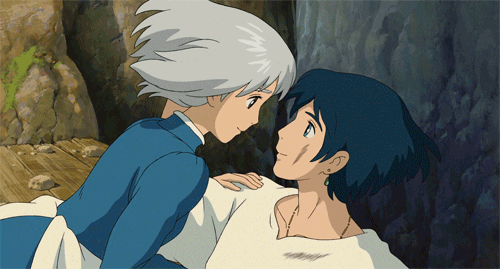
Saturn in 7th house.
🤍The personality with Saturn in 7th finds itself in a dilemma , to be close or far away , to open up or not .
🤍Close relationships have been marked away with restrictions and a sense of emotional coldness.
🤍The personality desires close soulful relationships but finds difficult to be vulnerable with its close partners.
🤍The personality in its earlier formative years is forced to grow up , restrict its inner child so as to act mature for the situations it is placed in to face , experience & deal with.
🤍Thus bringing up the courage to open up , be vulnerable , to let your inner child feel nourished & itself again , & to allow others to see yourself for your needs & desires too .
🤍To accept change & to grow together.
🤍Better relationships happen with time .
🤍Spiritual practice is deeply helpful.
🤍A responsible, mature , sensible , fair partner fills the mirror image . ⭐💗

Jupiter in 7th house.
✨Here the personality aspires to find a wise , guiding, spiritual, religious ,teaching presence in one's partnership.
✨A spiritual relationship where both can be themselves , grow & mature into their true selves.
✨Expansive relationships , soulful connections are searched for.
✨Guard against multiple relationships.
Venus in 7th house
💗The personality with Venus in the 7th house desires the romance , loving , sensual, beautiful experience of a true soul connection.
💗Balance , fairness , negotiation, a penchant for beauty & harmony within and also in relationships is desired .
💗Quality time spent , luxury , beauty , sensuality & heart to heart feelings are desired.

Rahu in 7th house.
💫Personality desires the excitement of close relationships, business avenues wealth . Partners of different origin , culture , background, of exotic origin find his attention. Choose your partners wisely.
💫Never let your close partners take advantage of your yielding nature. Do your spiritual practice.

Ketu in 7th house
☘️Personality is self focused this lifetime & is detached from close relationships , business etc.
☘️A spiritual meditative partner can be a good choice .
☘️Having a spiritual base to the relationships , marriage & business will help chanelise the energy towards its best use.
☘️Regular spiritual practice will also be beneficial.
DM for readings
#astrology#astro observations#astrology observations#counseling#vedic#vedic astro notes#astro notes#vedic astro observations#astrology blog#astrologer#sidereal zodiac#rohini nakshatra#planets#signs
321 notes
·
View notes
Text
the faces I reflect

💋 through my exploration of beauty, identity, and the art of reflection, i have turned the mirror inward—toward myself and those who echo my features in the public eye. guided by curiosity and a quiet reverence for fate, i have gathered the names of celebrities i resemble, whether through shared essence or striking similarity, as observed by others. while surface comparisons may appear coincidental, there lies an undercurrent of astrological nuance. birth charts, after all, weave their own stories—sometimes mirroring others through planetary dominances, shared inclinations, or complementary placements. in this brief analysis, i examine not only these surface parallels but also the deeper connections between us.
to preface, i have an ashlesha ascendant that conjuncts my ashlesha jupiter in the first house, magha moon sitting in the second house, mula sun in the sixth house, conjuncting my uttara ashada mercury. it’s also worth mentioning that my vishakha venus and vishakha mars in the fourth house aspect my ascendant. these aspects i feel, and through third party chart anaylsis, make up the largest part of my appearance.
while i lean more towards tropical astrology, i’ve noticed that when it comes to appearance, vedic astrology tends to be much more accurate and often aligns with synchronicities that make sense to me. i’m by no means a professional in either vedic or tropical astrology—these are simply my personal observations based on my own chart. i’ve found joy in exploring both systems individually and together, appreciating the insights and patterns each one can reveal. this is just something i’ve noticed and thought would be interesting to share. the placements mentioned for these celebrities are based on information available on the internet. while birth times and chart details can vary in accuracy, they provide an interesting foundation for observation and comparison. as with any astrological analysis, these placements are shared with curiosity and a lighthearted approach rather than absolute certainty.

💋 china anne mcclain (magha sun, ashlesha venus, magha rahu)
the first and most frequent mention is china anne mcclain—a comparison i’ve heard so often it feels woven into my reflection. between her and lisa bonet, these names have followed me the most, to the point where even my photos app seems convinced her pictures are mine. the resemblance feels uncanny, and while some of our features differ in size, there’s an undeniable thread of similarity that people often say could make us sisters. astrologically, it doesn’t surprise me; there’s a shared energy in the planetary influences that shape us, particularly those ruled by ketuvian and mercurial influences.
as i look back at older media featuring china anne mcclain, i can’t help but see glimpses of my younger self reflected in her—almost as though looking into a mirror. it’s a surreal experience, like rediscovering parts of myself through her image, and at times, it truly feels like a sight to behold.
being compared to someone as stunning as china always feels like an honor, especially since we’re both in the acting industry—a shared path that makes the connection feel even more significant. the more i’ve acknowledged the resemblance, the more i’ve found myself looking to her for inspiration, particularly when it comes to style. it’s as though seeing her is like seeing a version of myself in a different light, and i often find pieces she wears that i imagine would suit me just as well. it’s a quiet connection, both familiar and affirming, and i can’t help but admire her even more for it.
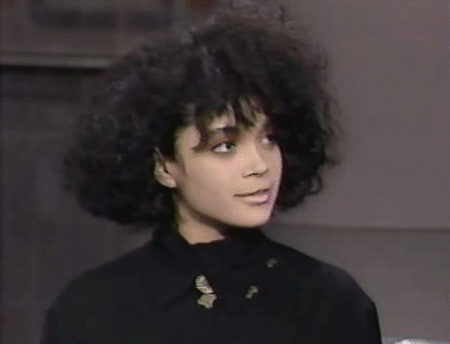
💋 lisa bonet (magha jupiter, i suspect ashlesha ascendant)
another very frequent mention, rivaling china anne mcclain in frequency, is lisa bonet. i’ve been told for years that i resemble her, to the point of being called more her twin than her own daughter, regardless of my hairstyle, and while i used to attribute it to our similar fair-toned complexions, i’ve come to see more of my features reflected in hers over time. people have described it as a certain nostalgic beauty—an essence that seems to linger in both of us—and i can’t help but feel deeply honored to be compared to her. lisa’s beauty has always felt timeless, and being placed in such company feels almost surreal.
out of everyone i’ve been likened to, she is the one i sometimes see most clearly in myself. while i still find a strong resemblance to chyna anne mcclain, especially in essence, complexion-wise i naturally lean more toward lisa. growing up, i always thought she was the epitome of “cool”—effortless, magnetic, and the very definition of an it girl. it’s no surprise i’ve found myself subtly emulating her style and demeanor, as she represents a kind of quiet confidence i’ve always admired.
surprisingly, lisa and i share only a similar ascendant (even though on most sights it says her ascendant is in punarvasu, i feel it is in ashlesha), which has made me reconsider the significance of my own ascendant. for so long, i’ve placed greater weight on my moon nakshatra, overlooking how powerful this placement truly is. as an honorable mention, her sun falls in my ketu nakshatra and her moon in my rahu nakshatra, adding a fascinating mercurial influence to her chart. perhaps it’s these unseen threads—subtle yet undeniable—that make the resemblance feel so natural, a connection that extends beyond what meets the eye.

💋 tessa thompson (magha moon)
another celebrity i’ve been compared to—though very slightly more sparingly and quite recently—is tessa thompson, who is absolutely stunning. i’ve admired her work for years, so hearing this comparison, especially for the first time while getting my hair done one day, felt both unexpected and flattering. when i mentioned it to my mom, she immediately agreed, saying she could definitely see it, despite the differences in our bone structure. admittedly, i hadn’t noticed it much at first, but now, when i look at her, there’s a resemblance i can’t deny.
tessa and i also share a ketuvian moon, which aligns with a pattern i’ve noticed: the people i resemble most often share an ascendant or moon placement with me. there’s something fascinating about that subtle astrological link, as if it explains why these comparisons surface so naturally. what i find even more comforting, though, is that many of the celebrities i’ve been told i look like are actresses. as an aspiring actress myself, there’s a certain reassurance in knowing i’m in such good company—or, at the very least, that i could be someone’s doppelgänger on screen.
honorable mentions :
pinkpanthersss (ashwini venus) now, i’ll be honest—this is one comparison i don’t really see at all, and even my mom doesn’t see it. yet, my older sister and a few people on the internet have pointed it out, so it’s a mention worth including. surprisingly, we don’t share any exact placements, though we do have a few ketuvian-ruled nakshatras in common, which may lend a subtle energetic similarity. while there isn’t much astrological linkage between us beyond that, i’ve still been told on occasion that i resemble her. it’s not as frequent as some of the other comparisons, but it happens enough to have caught my attention. even if i don’t see it myself, it’s fascinating how others perceive similarities that sometimes go beyond what we’re able to recognize.
doja cat (vishakha venus, sun, & ascendant) a comparison i’ve received sparingly but often enough to take note. while we don’t share any exact placements within the same nakshatra, there are subtle connections between our charts. her mars aligns with the nakshatra of my sun, and her sun, ascendant, and venus nakshatras mirror my venus nakshatra, which aspects my ascendant. i’ve been told that, from certain angles, i resemble her—enough that i could pass as a stunt double or doppelgänger of some sort. at first, i thought these comparisons were tied to our lighter complexions, but over time, people have specified that i resemble a younger version of her. though i hadn’t seen it myself initially, hearing it repeatedly has made me pause and reflect. it’s a comparison i now find worth mentioning, as it’s been brought up enough times to leave an impression.
halle berry : (magha moon, ashlesha venus & sun) a name that has followed me through passing comments at work, shared observations from coworkers, and the casual assessments of strangers. admittedly, i don’t see the resemblance myself, yet the repetition of it has made me pause. sometimes, beauty can be more than what is plainly visible; it can exist in essence, in the intangible, in a certain way one carries themselves that draws a familiar reflection.
💋 perhaps there are unseen threads that tether us, subtle overlaps in energy or expression that extend beyond what the mirror shows. halle’s presence has long been synonymous with a kind of poised magnetism—graceful yet undeniably powerful. it is a quality that cannot be distilled into features alone, as though it is whispered into existence by something greater. while i remain uncertain of the likeness, there is a quiet acknowledgment that others have seen it—a connection, however faint, written into the nuances of energy and expression that we carry.
💋 in reflecting on these comparisons, i can’t help but feel honored to be in the company of such beautiful, talented women. it’s fascinating to see how astrology connects us in ways we don’t always expect—through subtle threads, shared energies, and placements that reveal themselves quietly but meaningfully. every part of the chart holds significance, from the aspects we value most to those we might overlook—loose connections, harsh angles, or seemingly minor placements all contribute to shaping who we are. in my one face, there are a million—the faces of others reflected through shared features, the essence of similarities, and the faces of my ancestors carried through me. it’s a reminder of how interconnected we all are, not just through appearance but through the energies we hold and the worlds we observe around us. beauty, after all, is in the eye of the beholder, and i am so grateful to be seen and compared in such great company.
until next time, continue observing xoxo
#vedicastrology#astrology#nakshatras#twins#identical#astro#astro observations#astro notes#ketu#magha#ashlesha#vishakha#mula#merciury#mercury planet#vedic astrology#vedic astro notes#vedic astro observations#astronotes
84 notes
·
View notes
Text
What Is Your Lunar Sign? (Nakshatras)

We all know about the big 3's in modern astrology: Sun sign, Moon sign and risin sign. But what about the nakshatras, or the Lunar Signs? It is easy: you just need to find out in your birth chart in which nakshatras these planets are: Moon: the most important nakshatra to look at. It is your birth nakshatra. It defines your Vimshottari Dasha, or future, as soon as you were born. It shows your psychological and biological karma, your mind and the way you move in society. Ascendant/Rising Sign (Lagna): it shows how you integrate yourself with society but in a physical way. In other words, it shows how you present yourself, where you focus and how your life's environment looks like. Sun: it is a crucial planet as it is your battery. How can you live without energy? How can you live without the Sun?... It is impossible. Here, the Sun represents your vitality, your health, your spiritual development and your righteous actions. Atmakaraka (AK): the Atmakaraka is the significator of your soul. It is the planet with the highest degree in your chart. It represents your difficult karmas and how to deal with them. It also shows your potential, what is important for you and how you realize yourself. The Ascendant Lord (or Lagna Lord/LL or Lagnesha): it shows the same things as the ascendant but in a more active way. It shows how you get nourishment, your passion in life. The Lagna Lord indicates where your intelligence is best applied and what kind of situations you deal with since early age.
The first syllable of your first name: don't forget your first name! The first sounds of your name corresponds to a particular nakshatra. Even if there is no planet sitting there in your birth chart, this nakshatra will also influence your behavior and life. The nakshatras you will find there will be your core nakshatras. If you find more than one of these planets above in one single nakshatra, then, this nakshatra will play a very essential role in your life. However, if you find other planets in one single nakshatra, pay attention to this nakshatra as well. You can also look at the divisional charts as well. Don't hesitate to apply this method to the Sun Signs, aka our dear twelve signs. You can find your Indian birth chart via this free website. Here, you can also find your AtmaKaraka.
#jyotish#astrology#vedic astrology#nakshatras#moon#sun#ascendant#lagna#ascendant lord#atmakaraka#planets#rising sign#rising sign ruler#birth chart#sidereal astrology
108 notes
·
View notes
Text
the astrological implications of "lookalikes" and nakshatra characteristics - the dualistic nature of rahu and shani🪞
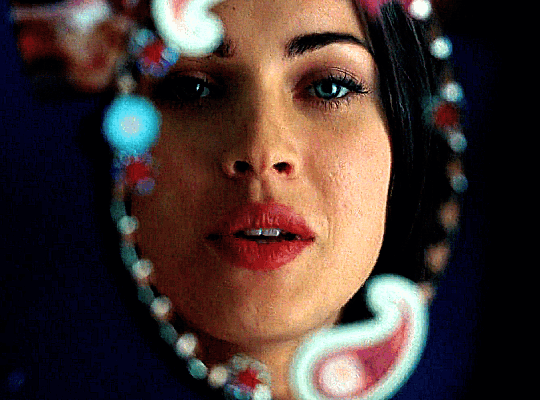
💎 in the seemingly constant conquest for people to find their dominant grahas within their birth chart, it is often helpful for people to compare their morphological features to that of celebrities who share their primary placements. many celebrities often dawn similar faces to their red carpet counterparts which is no coincidence. i have included a few of the ever-increasing physical similarities witnessed among celebrities below and commentaries on what contributes to their facial appearances. this should serve as subtle introduction to a morphology- and fashion-based series i hope to develop within the next year or so. as an additional thank you to the now 5,000 of you, i am also offering 20% off on my cosmetic cosmological readings and vedic reading bundle for the next week. thank you for all of your amazing support and i am beyond excited to witness the growth in people learning about vedic astrology and religion as a whole.

above lies a personal interpretation of mine on the grahas and how they relate to stylistic and morphological essence that i find will be helpful for understanding this post and more posts to come:

🪞 zoë saldana (left) and thandiwe newton (right)
saldana is mrigashira surya (tightly conjunct buddha), pushya lagna (tightly conjunct shukra), and anuradha chandra native. whereas, newton has a swati surya and swati (or vishakha) chandra. the only direct similarity between both women is both were born on monday (the day of the moon) and within their chandra mahadasha which can subtly increase their lunar inclinations.
while both celebrities do not have specific astrological rashis in common, there is a subtle nuance that lies within their astrological compatibility. saldana is extremely dominant in saturnian energies and newton is likely extremely dominant in rahuvian energies. shani and rahu natives are often mistaken for one another due to their similar properties. think of the two grahas as one combined coin of governance over the instances in which define material success in one's life (such as sorrow, pain, grit, and finances). shani acts as the grounded rahu, who is slowed and wise in his pursuit towards fulfillment. whereas, the out-of-body node rahu is exploitative, hasty, and rapid in movement. both govern over the trials and tribulations we may experience in our physicality. thus, both are intricately intertwined and so are their natives.
rahuvian natives share similar features of thinned and highly-arched eyebrows (characteristic of thinner eyebrows being considered more yin in nature), less prominent noses and chins, fuller cheeks, smaller facial frames, expertly defined cupid's bow, and large eyes. whereas, shani natives share similar (if not exact) features to that of rahu but with slightly less exaggerative features erring on the side of angelic essence (yin and ethereal, otherworldly, and mystical) compared to the ingenue essence likes of rahu (decorative, cute yin)

🪞 jaime pressly (left) and margot robbie (right)
another case study of rahuvian-saturnian beauty is pressly (pushya surya loosely conjunct shani and shravana chandra) and robbie (ardra surya tightly conjunct brihaspati, punarvasu lagna tightly conjunct buddha, and swati chandra), both of which share a shani atmakaraka (the graha/karaka most indicative of oneself). both celebrities share the similar characteristics of the two grahas which highly emphasize yin-nature. the subtle essences of both graha types are analyzed below. both of which favor yin and small facial features and clothing details (such as dainty jewelry pieces, note how many of the graha natives sport blue jewelry indicative of shani's rulership) and lighter and softer features (such as bleached/highlighted hair and naturalistic, nude coloring in makeup):
rahu aesthetics: yin, but decorative small-scale yin. features flowing, rounded shapes in both anatomy and clothing-styles. small, compact figure in which natives prefer to adorn themselves with small decorations and details, such as delicate trimmings.
shani aesthetics: most yin essence of the grahas (though it flows back into yang). it is a type of yin that is ethereal in nature. natives' body type has the least concrete shape of all the essences. its silhouettes are long and flowing with draping and webbing. fine textures, as well as transparent and iridescent colours, contribute to their ethereal appearance.

🪞 sarah hyland (left) and mila kunis (right)
hyland has a swati lagna, anuradha surya tightly conjunct shukra, and dhanishta chandra loosely conjunct rahu. kunis has an ashlesha surya, anuradha lagna loosely conjunct ketu and brihaspati, and swati chandra loosely conjunct shani. despite both women being influenced by different planetary aspects (including the oppositionary ketu for kunis), you can notice yet again their saturnian (specifically anuradha) and rahuvian (specifically swati) aspects dominating both women almost entirely.
anuradha: as i spoke about in a previous post on this nakshatra, anuradha natives possess specific, bunny-like features indicative of the nakshatra's rabbit yoni. these natives often possess big, round, and bright eyes; rounded foreheads; full yet smaller horizontal surface area lips; and prominent central incisors.
swati: swati's dominance over mahamaya results in natives' face types having the same length and width dimensions. it is harmonious as a whole without any dominative unique features. they are genetically predisposed to a beautifully attractive round face with harmonic and regular proportions specifically surrounding the contour region of their face. due to the mahamaya emphasis, natives of swati have a distinct affinity for facial feminizing techniques (such as hairline modifications, jaw reduction, rhinoplasty (nose reduction), and facial lifts). note that these improvements might appear the best on these natives due to their rahuvian abundance, but natives must learn to balance this affinity for bodily modification (specifically with their nose or cheekbones) with equal bouts of self care and physical reflection.
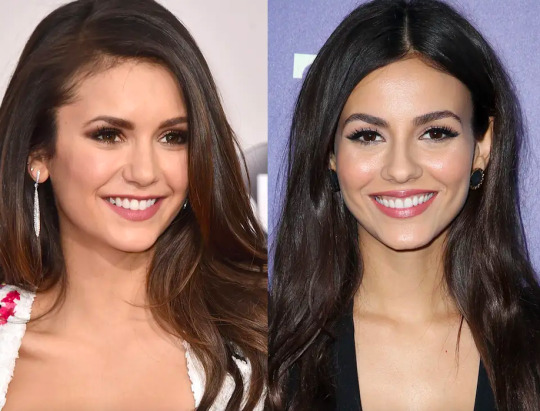
🪞 nina dobrev (left) and victoria justice (right)
nina dobrev has an jyeshta lagna, purva ashadha surya loosely conjunct shani, and shravana chandra tightly conjunct buddha. victoria justice has a dhanishta surya, shravana chandra loosely conjunct shani, and swati lagna. both celebrities share similar venusian and saturnian undertones, yet it is likely the shravana emphasis that further adds identical qualities to both women. shravana beauty, contrarily to pushya, it is chandra-based beauty (sensual, deep yin) with saturnian undertones (ethereal yin).
chandra (a graha with emphasis on femininity)-based beauty is mature and sensual when in conjunction with shani (a graha with emphasis on traditionalized values). overall resulting in a romantic-essence beauty type: like the circular shape of a voluptuous, full moon, the romantic shravana silhouette is curvy and round, mirroring that of an hourglass. soft, flowing garments create movement in the silhouette, whereas romantic colors (that of a red and pink palette) look best on these women.
consequently, individuals with the shravana style essence tend to create an overall visual impression of sensuality and glamor. although their essence is yin, such as the ingenue, rahuvian essence, it is a mature sensuality as opposed to the cute, innocent prettiness of rahuvian natives. adjectives such as sexy, 'womanly', and glamorous can be used to describe these natives. abstractly, one can associate the shravana style/anatomical essence with the themes of luxury and indulgence. this aura specifically conjures up images of expensive jewellery, candlelit dinners, and red roses similar to the blooming nature of this nakshatra's artha purushartha and brahma trimurthi.

🪞lili reinhart (left) and brittany murphy (right)
reinhart has an uttara phalguni surya and chandra (loosely conjunct rahu) and swati lagna. whereas, murphy has an ashlesha lagna and swati surya and chandra (loosely conjunct shukra). both women share a surya atmakaraka and brihaspati amatyakaraka. yet again we see a physical example of rahu being indicative of identical similarity amongst others. this is likely due to rahu and shani (if aspecting one's surya or chandra) in one's natal chart being indicative of twins. specifically these aspects include the seventh house and bahuputra yoga. the two grahas' indication of twins can manifest one finding other non-related individuals who share an eerily similar appearance or siblings who are specifically dominant in shani and/or rahu energies looking identical despite not being identical twins. both individuals serving as seperate sides of the same cosmological coin.
also note the stylistic differences between reinhart and murphy above. murphy looks more natural in the shani-based vata colors of silvers and blues. whereas, reinhart looks absolutely gorgeous yet slightly "off" in the neon-red coloring of her dress (due to the countering pitta dosha nature of red). while reinhart may be influenced by the pitta surya via her surya and chandra, it is clear she favors vata coloring naturally. do note that vata dosha colors such as brown and grey should be avoided for those experiencing common vata-associated issues with matters such as anxiety and depression. this is why it is recommended for these natives to incorporate soft, pastel, and pale iterations of the respective colors, such as red or orange. too bright or cold colors can bring natives of this dosha more out of balance. however, white is said to have a good effect on people with a predominant vata dosha constitution. additionally, the accumulated surplus of vata dosha is well influenced by the color yellow (likely contributing to rahu and shani's favoring of blonde hair and highlights).
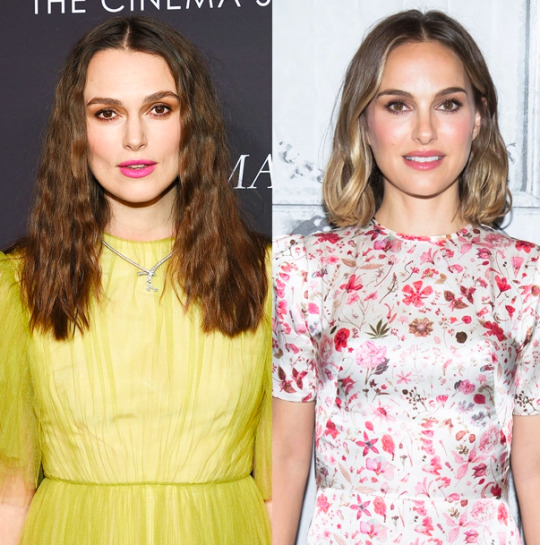
🪞keira knightley (left) and natalie portman (right)
knightley has an uttara bhadrapada surya (loosely conjunct buddha and shukra) and rohini chandra. portman has a rohini surya, swati lagna, and purva phalguni chandra. both were born on tuesday (the day of kuja). both women incorporate lunar romanticism but differ with their shani and rahu influences ever so slightly.
shani subtlety: a combination of of ying features and mysticism, also known as the ethereal and most yin essence. consequently, individuals with the subtlety of shani tend to create an overall visual impression of softness and otherworldliness or mysticism. although they are more feminine like the rahu and lunar essences, this is an 'old soul' kind of femininity as opposed to sensual or cute, pretty femininity. adjectives such as mysterious, ethereal, mystical, or 'old soul' can be used to describe people under this graha's influence. abstractly, one can associate the graha with the themes of mysticism and the cosmos, often conjuring up images of mythical creatures, fairies and mermaids, and the cosmos and galaxies within others.
rahu subtlety: a combination of femininity with childlike innocence and delicacy, also known as the decorative, small-scale yin subtlety. consequently, individuals with rahu subtlety tend to create an overall visual impression of youthful femininity and innocence. although this subtlety is feminine like the lunar essence, it is a childlike, innocent cuteness as opposed to the mature, sensual femininity of the lunar individual. adjectives like gentle, cute, and pretty could be used to describe natives. abstractly, one can associate rahu subtlety with the themes of innocence and youthful idealism, conjuring up images of delicate flowers.
note both natives have a rectangular-shaped face with square foreheads and jawlines. they have long, ovular faces but with angular edges. they both possess immense symmetry and harmony as seen in lunar women but their vata influences dominate this abundance with facial contouring and structural emphasis. their overall appearance is an example of vata extremism with lunar subtleties. compared to more vata-lunar natives like dobrev and justice, one can really see their morphological differences. additionally, these aforementioned planetary subtleties are also witnessed with both of the actresses careers. for example, knightley stars in more whimsical or vintage films such as "pride and prejudice", "the duchess", and "pirates of the caribbean". whereas, portman stars in more romantic, subtle thrillers that embody the purity complex seen within rahu, such as "black swan", "v for vendetta", and "leon".

🪞 zooey deschanel (left): uttara ashadha surya, chandra, and lagna (tightly conjunct buddha) born on thursday, day of brihaspati, with chandra amatyakaraka
🪞katy perry (right): swati surya and lagna (tightly conjunct buddha) and vishakha chandra (tightly conjunct shani) born on thursday, day of brihaspati, with chandra amatyakaraka
🪐 are you saturn and/or rahu dominant? have you encountered similar instances of being compared to other people or celebrities based on your physical appearance? i think it is interesting that even individuals influenced by these grahas are compared to other people more so than those who are not influenced by shani or rahu. it is likely people would suspect buddha to be involved in this phenomena. however, buddha is not implicative of identical nature, it is implicative of the flattery that lies within mimicry via emulation. this is why mercurial celebrities often undergo bodily alterations to resemble rahuvian/saturnian celebrities (such as bella hadid's cosmetic transformation into resembling carla bruni or the character elvira's direct copying of the character vampira).

🪞 jessica chastain (left) and bryce dallas howard (right)
additional examples of astrological lookalikes:
jessica chastain (anuradha lagna, rohini chandra loosely conjunct brihaspati, and uttara bhadrapada surya loosely conjunct buddha) and bryce dallas howard (revati lagna, shatabhisha surya loosely conjunct kuja and shukra, and uttara ashadha chandra). both share chandra atmakarakas.
jordin sparks (swati chandra, mula surya loosely conjunct shani, and purva ashadha lagna) and america ferrera (ashwini surya tightly conjunct buddha, anuradha chandra tightly conjunct kuja, and purva ashadha lagna tightly conjunct brihaspati)
kiernan shipka (vishakha surya and anuradha chandra) and emma watson (ashwini surya, uttara phalguni lagna, and mula chandra)
* all of these placements were found using astrotheme/.com and/or astro-charts/.com. it is important to note that some chandra (moon) placements may be off by up to 6 degrees and lagnas (ascendants/rising signs) as well, due to the fact that many websites do not have 100% accurate birth times for the given celebrities.
xoxo, angel 💋 (will be uploading part two of my buddha self care exploration soon lovelies)
#vedicastrology#astrology#nakshatras#moon#rahu ketu#mercury planet#budha#saturn#chandra#buddha#twins#identical
508 notes
·
View notes
Text
Always a ketu woman chasing a Mars man and Mars man chasing his beliefs/freedom/life/fun/adventure/even women no not woman but women.
People Favorite couple that never worked/works.
A tragic toxic love triangle Can we say? And not "twinflames" for sure 👎
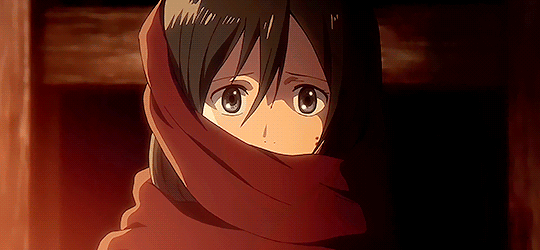
#astrology#nakshatra#sidereal astrology#astrology community#claire nakti#astro notes#tarot#astro observations#vedic astrology#astrology observations#witchblr#witchythings#astro community#witch community#mars#ketu#planets#nakshatras#mrigashira#magha nakshatra#chitra nakshatra#dhanishta nakshatra#mula nakshatra#pop culture#witchcraft#tarotcommunity#astroblr#jyotish#astro talks#girlblogging
89 notes
·
View notes
Text
There’s this sentiment that Jupiter influence can create androgyny/ gender nonconformity and therefore is common in the charts of gay/queer/etc people, which I’ve seen a number of astrologers say, and I’ve observed to be pretty accurate.
That being said, the way *some* astrologers obsessively try to assign being gay or trans to specific astrological placements is becoming a bit inappropriate.
I’m not saying this applies in every situation, it definitely doesn’t, but sometimes it’s overwhelmingly obvious that these “observations” have nothing to do with actually being queer and are instead reflective of the astrologer’s own bias and the 3 celebrities that supposedly back up this stereotype.
#vedic astrology#nakshatra#especially in relation to having weak planets#if I sound mad in this post I’m not#I just haven’t seen anyone else say it#random#astrology
30 notes
·
View notes
Text

Hidden Secrets of Venus in Virgo
If you read about this placement, many will say if you have Venus in Virgo, it means you do not love yourself because you will tend to be too analytical and critical of others, so the conclusion is that this is a projection of the flaws you fail to see within your own self. On many levels, self-awareness and self-reflection reveals our flaws once the soul is ready to pierce the veil of “maya” and illusion. Considering that all is Self, this makes sense. On a spiritual level, that will be great insight for soul growth for the native. On the material front, even though the criticism might be a reflection of their own flaws, what Venus in Virgo is seeing in others might be true. As a matter of fact, this placement of Venus is likely not to miss anything in their relationships or the material in terms of the details!
Venus in Pisces (where Venus is exalted) – the exact opposite of this position- has flaws as well. This energy just may not be interested in observing them and learning about them. This does not mean that the native with this placement has a lot of self-love. As a matter of fact, while Venus in Virgo can be critical of Venusian themes, Piscean energy is easy-going, so if there is a problem or a conflict, in a less evolved soul, it means this person may be inclined to avoid it. Mercury, Virgo’s lord will not allow Venus in Virgo to be so easy-going. Mercury wants you to notice what you are seeing.
This placement of Venus in Virgo is very common in some souls who are here to start the journey to spiritual awakening. It is also common in people with extremely dynamic minds who have intellectual or even healing abilities that are out of this world. They have a way of merging the material and the spiritual that takes us to a level that is beyond where we are in consciousness.
Because of this dual awareness, Venus in Virgo’s desire for what is REAL is often more apparent the closer Venus gets to its degree of debilitation which is 27 degrees. These people may struggle with beautifying themselves and their belongings because, welp, Mercury has taken over their Venusian desire. One must be careful. The closer to the degree of debilitation, it might make a person more susceptible to loss due to the spouse or partners or even people cheating them or taking advantage. Aspects of benefics in the natal chart would lessen the likelihood of this happening.
Perfection is one goal that Venus in Virgo may be seeking, but another less discussed point is that the person, due to the Mercurial nature of Virgo, realizes the dichotomies between what is said and done by humans. Mercury represents duality and gives Venus in Virgo the ability to see that what is ideal and easy going about the material for Venus in Pisces is not real. This makes these people the best critics! But this is why Venus is not so happy in Virgo. Venus gets found out by Jupiter’s stepson, Mercury! (If you know the story about the gurus Venus and Jupiter this will make sense!) When Venus is in the Pisces energy, a less evolved native may not care about the truth. It is too busy enjoying the bliss of the dream provided by Venus. So, while astrologers are writing about you needing someone perfect that does not exist, Venus in Virgo, we know you are likely getting shady prospects for love who may not be who the world thinks they are when the doors are closed. Or you may get business partners who cheat you or who do not have your best interest at heart. There is a blessing to this position, but that aspect of it definitely might come across as a curse.
You may also be a person that is looking to reach for higher philosophical or spiritual ideals and ways of being, and yet the person who is fully entrenched in the illusion of the material world or who is not an intellectual is likely the one coming to your doorstep for a relationship. Venus in Virgo might also bring you a gaslighting, spendthrift. So, what does Venus in Virgo do?
One thing is for certain: Mercury wants your attention. Mercury is a messenger of your soul or the Sun. It’s always quite close in orbit to the Sun for this reason. This placement may not feel like a blessing, but it is likely that you’ve had your share of blissful fun in relationships in your past lives. So, you will either have to work doubly hard in relationships to have them along with your life’s mission, or you can focus fully on what the Universe wants you to convey to the world and stay single.
Here are some ways to see in your chart what your soul is here to convey:
1) Look at Mercury’s house placement. (This is important as this is Virgo’s lord). You will likely be a genius in the dynamics of that house.
2) Look at Ketu’s placement in your chart. You may eventually analyze the themes of this placement a lot and your insights over time will likely help others and will be important for soul growth. Where Ketu sits represents our past life place experience, but also our early home life. We can get an idea of our past life lessons that we can draw upon based on what we experienced at home and in the beginning of our lives.
3) Look at the degree of Virgo and see what Lunar Mansion (Nakshatra) it is placed in. The Lord of this Lunar Mansion will also be a key to understanding what the gods want you to convey.
Here is an example:
Virgo at 1 degree is Uttara Phalguni, pada (section) 2
The Lunar Mansion Lord is the Sun
This person should look where the Sun, Mercury and Ketu are sitting. These three planets, alone, with the Lunar Mansion speak volumes about intelligence, organizational skills and dealing with contracts. This person might be an advisor, teacher, professor or lawyer.
Some people are here to enjoy Venus, while others are here to critique, analyze and elevate matters related to Venus, so that they can uplift, enlighten and take the world to a whole new level. So, Venus in Virgo, though you may still be trapped in the mindset of your past lives where you were able to enjoy relationships blindly, just know, you have a mission from the gods, and we need your intellect this time around. If you can deal with the reality of having relationships (i.e. a partner or even a love life) and you feel lead to go down that path, do you! Hopefully, this post gives you some hope about the beauty of your existence and how desperately the Universe needs your gifts and abilities.
Namaste…
#spirituality#self awareness#higher self#self improvement#self help#self love#higher consciousness#consciousness#astrology observations#astrology community#astrology blog#sidereal astrology#vedic astrology#astrology signs#astrology readings#astronotes#astro notes#astrology#astro observations#astro community#astro placements#venus#venus in virgo#zodiac#sidereal chart#sidereal zodiac#sidereal observations#venus in pisces#planets#nakshatra
22 notes
·
View notes
Text
HOW TO FIND A WEAK MERCURY IN A BIRTH CHART

Learning disabilities
Poor memory
Lack of focus
Nervousness
Weak decision making
Issues in education
LET ASTROLOGY CHOOSE YOU
#astro community#astro notes#astro observations#astrologer#astrology#astrology blog#vedic astro notes#vedic astro observations#vedic astrology#astro tumblr#sidereal astrology#astroblr#astro placements#zodiac#astrology signs#horoscope#sidereal zodiac#zodiac signs#sidereal chart#vedic astrology observations#vedic chart#indian astrology#birth chart#jyotish#nakshatra#astrology observations#astrology notes#astrology placements#planets
26 notes
·
View notes
Text

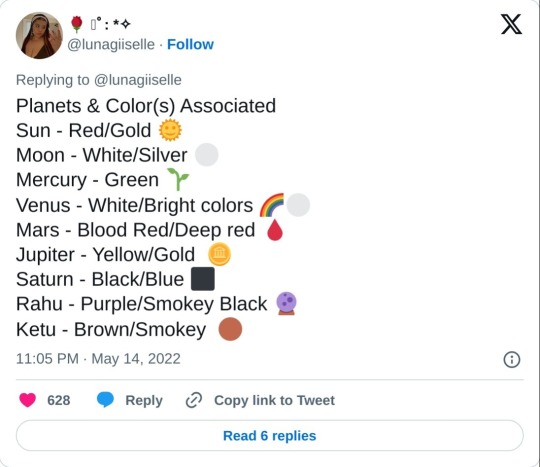







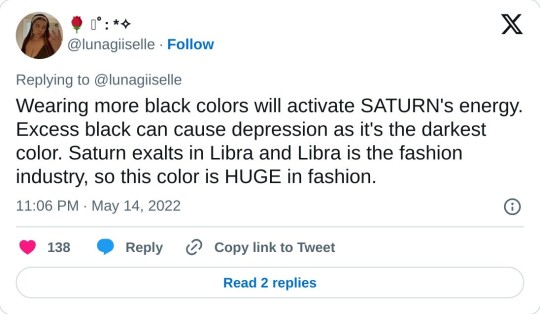
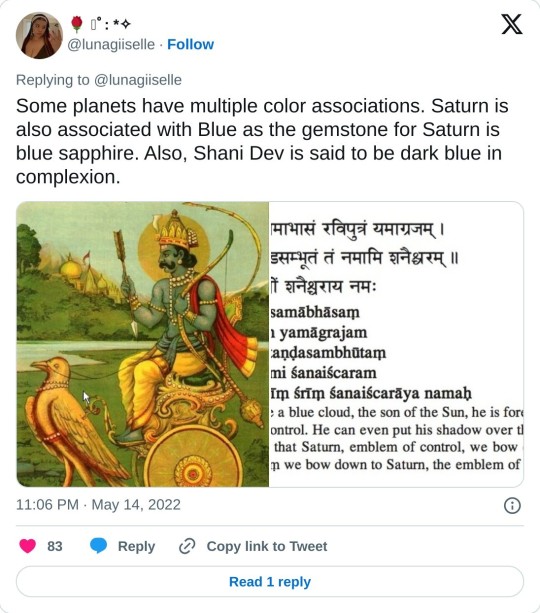


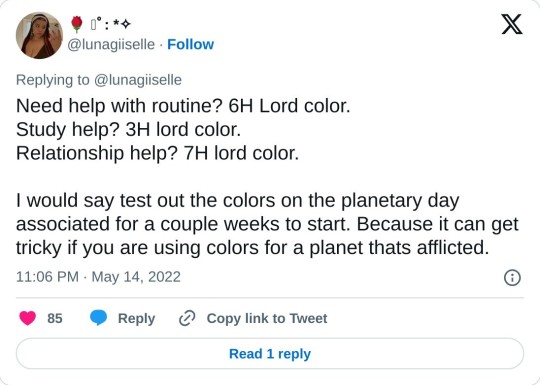
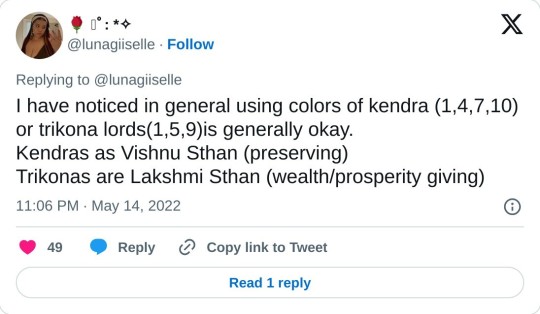



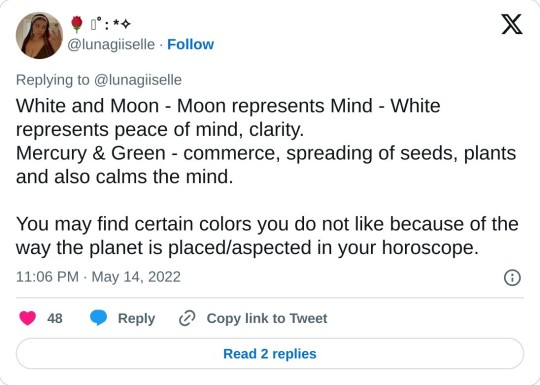
here's an article going into detail of each color and other herbs, usages in Vedic Astrology:


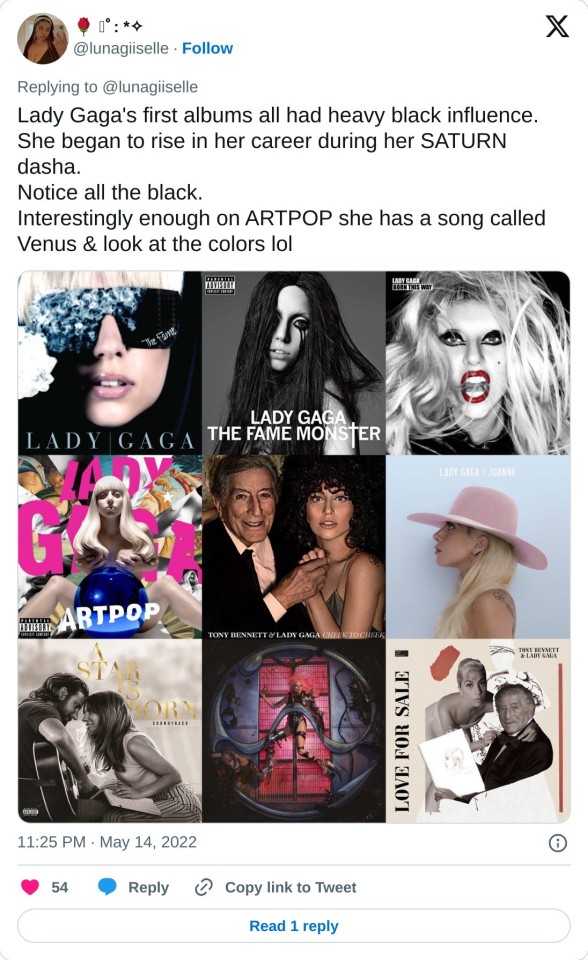
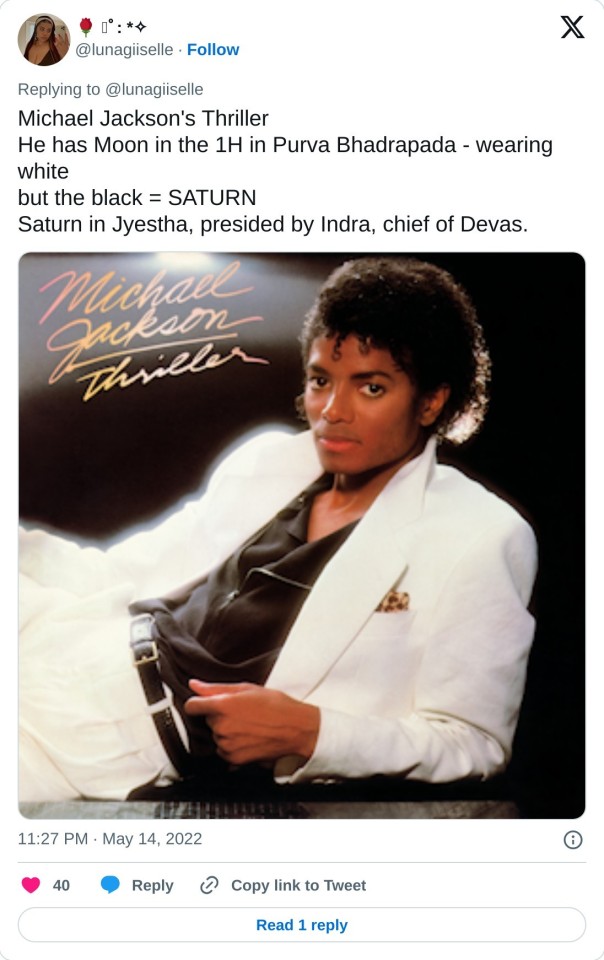

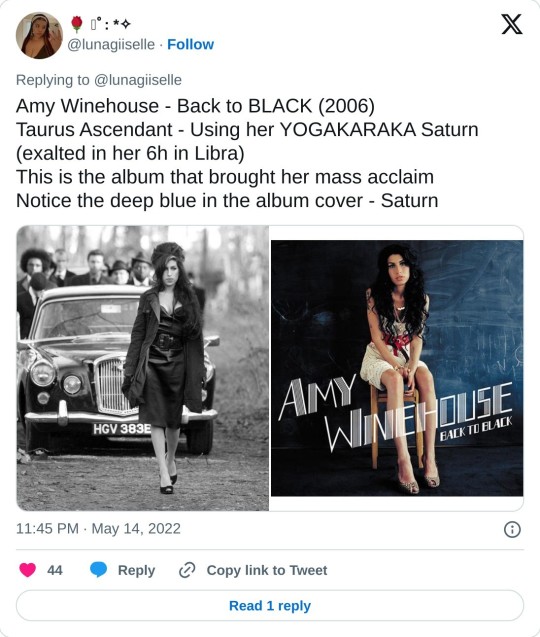
#astrology vedic#vedic notes#horoscope#colors in astrology#colors vedic#ketu#rahu#sun#moon#mercury#venus#mars#jupiter#saturn#houses astrology#nakshatras#color nakshatras#planetary colors#planets in horoscope#planets astrology#red#gold#brown#white#green#yellow#black#houses vedic astro#sideral astrology#sideral vedic astrology
208 notes
·
View notes
Text
The differences between women of the three Venus nakshatras:
If you're one of them, I suggest you read them all, not just yours. Most will read Bharani first, then P. Phalguni and lastly P. Ashadha, but a more interesting order would be P. Phalguni-P. Ashadha-Bharani.
Bharani:
The birth of Venus_ the intense and transformative place that determines the journey.
The most passive energetically, perhaps the most visibly defensive. Focused on self-preservation, on deeper causes of their desires, wants, needs, attachments and love, and protective of their energy while relentlessly using it to get "what they want". More compassionate then Purva Phalguni, for example.
The themes of Bharani are physical creation, preservation and decay, along with the overarching rules or "mysteries" behind beauty, desire, attachments and love. Since it's Venus channeled personally, and connected to the sign of Aries/the active manifestation of Mars and the first house, it IS Venus, and so it lays the foundation for the other two. What that means is that one of its main concerns is secrecy and gatekeeping necessary for cultivation of everything that Venus represents, more so than other Venusian nakshatras.
It's also the only one that is Outcaste(Mleccha), which gives it enormous power and energy free of conventions. There is also en extreme sensitivity here that is not present in the other two. There's an awareness of energy and the core essence of everything that leads to the understanding or embodyment of "the ultimate", whatever that is.
Bharani women are embodyments of mother nature. They seek someone who can give them exactly what they want and need and nothing else. There is definitely a broad worldview that is naturally deep in them_ Bharani is an elephant yoni nakshatra, it has deep and profound memory, and some consider it the last nakshatra (most consider its yoni consort_ Revati as the last nakshatra, so that's some great insight into Elephant yonis). Despite this broad and deep view, Bharani women have a determination and a drive that can translate into an intensity with a "one track mind". Intensity and depth is in them almost always.
Definitely have the potential to be spiritual, because of a love for depth and an understanding of purity. Their yoni consort_ Revati is perhaps the most spiritual nakshatra, connected with the theme of "Godhood". Bharani's spirituality can be fused with romantic or sexual love and manifest as fierce devotion. They have an inability to tolerate "impurity"_ the error or fault between worlds and energies between them, for example, between the inner substance and the outward manifestation, or between the masculine and the feminine, between this world and the other. This can translate to a radical love of and demand for honesty and justice.
Balance and harmony are necessary for Venus but its sign rulership of Mars is the energy that drives them and in a sense, grants identity. The fusion of foundational energy of Venus with the active Mars is the theme of sex and death so prominent in this nakshatra. Life is the result of the sexual act but the culmination of that act is called "a little death". Love and desire drive sex so they also drive life and death. So, if Venus is the equilibrium and the balance then Mars is the other side_ the need for release. Together, they grant life and rule over the two components necessary for existence_ identity and the loss of it through love. Bharani is about defining existence itself, their own or of the world, through love.
Bharani women can act in a very enthusiastic and driven way, but also have a side to them that is extremely serious, to an extent that neither Purva Phalguni or even Purva Ashadha really reach.
Archetypically they represent the "damsel in distress" or "the princess in the tower". Bharani is something or someone nearly impossible to get or even find, which could be also associated with its symbolism of the yoni. It's also connected to the Holy Grail, or "The Philosopher's Stone" (that one was said by Claire Nakti recently and I have always gotten that vibe energetically from Bharani but could not articulate why. It makes so much sense though. This can also be another confirmation of why I associate Bharani with Rapunzel's tale so much).
Another archetype that they remind me of is the princess with high standards in fairytales that is so common. A similar one would be a young women who is fearlessly defiant, especially about choosing her own love.
Out of all Venus nakshatras Bharani women need gentleness the most, since's it's the most high tension/triggering placement among them. Bharani women can feel defenseless and abused, especially from harsh or crude(mostly masculine) energies. This ironically increases their defensive nature and a need for protection, despite being naturally gentle and passive. There's a clear difference between when a Bharani women is given her justice and when she is not. Their fierceness and gentleness are, in truth, the same in spirit.
Bharani moons Claire Holt, Gaia Weiss, Isabel Lucas


Purva Phalguni:
Out of the Venus nakshatras, Purva Phalguni is the one that is the least expressive emotionally. At least, not obviously. They too feel a lot, but their Sun rashi rulership grants them an "unbothered" nature.
So Purva Phalguni is the Venus nakshatra of pure unashamed enjoyment. They have clear preferences and after establishing the foundation in Bharani, Purva Phalguni is free to be prideful about their love. It's connected to ease, contrasting Bharani, which is more full of melancholic beauty and the meaning of struggle.
Purva Phalguni women are connected to material things and love it. Their personality is more "Sunny" than other Venus nakshatras. It's the most "neutral" Venus nakshatra. Definitely very sexual along with Bharani. The difference is that Bharani is represented by the yoni and the passive feminine principle, but Purva Phalguni is represented by the phallus and the active, masculine assertion of self through Venusian themes. In this way, they have a connection that is reaffirmed by the "special relationship"(traditional texts say so) between their yoni animals_ the rat and the elephant.
Women of this nakshatra, being the feminine representatives of the nakshatra of masculine assertion, have a friendly and easygoing nature, due to being relaxed. They have an energy of being "provided for", but they're still ruled by the planet of mutual exchange(Venus), so they're very giving in their own way. They like to pamper their beloved with gifts and/or attention, they love to feel special and make them feel "special"(Leo/Sun rulership) in return. Their tendency towards fun (5th house association) makes them a memorable presence. They do love spotlight more than Bharani and Purva Ashadha.
One interesting association of Purva Phalguni is discernment, which leads to their tendency of favoritism. Bharani and Purva Phalguni both love being passive in a sense of having someone take the reigns that helps them relax into a receptive, feminine role but they both also love to give back. Bharani is more receptive though, hungrier and harsher than Purva Phalguni, which is more relaxed and willing to give. Because of this, in a way, Bharani and Purva Phalguni women might become great friends with each other.
Charisma is a big thing here, due to Leo/Sun/5th house associations. Venus here is expressed through soul identity(Sun) and shown in the most adorned light among all three Venus nakshatras.
An important association of Purva Phalguni is procreation. Bharani as also explicitly associated with the sexual act and bringing a life, but Purva Phalguni focuses on the pleasure aspect of it, on the leisure and continuing the bloodline. Its yoni consort_ Magha is associated with family trees and bloodlines and is also fully in Leo(5th house/children association). Bharani on the other hand, focuses on immortality of love, attachments and transition between worlds, and sex for them is the ultimate point of change.
Even though they're the most outwardly stoic and act the most unaffected out of the three, they're also most prone to dramatics. There's a side to them that loves to show off and display, even if they don't show everything to everyone.
The dramaticism is for self-confidence and enjoyment(mainly, their own). It's not a placement that is concerned with gossip or everyone else's lives. Quite the contrary. If they don't like you, they will just pay you no attention. In this way, they're the least personal of Venus nakshatras. They have an aversion to anything unnecessary(kind of similar to how Bharani can't tolerate impurity) and outward harmony and empowerment is essential.
The archetype that Purva Phalguni women represent is the loving wife/girlfriend or "the spoiled lady". Purva Phalguni is Brahmin(highest) caste and is associated privilege and the ease that comes with it. Partnerships are important to them(the second stage of civilization/others. Bharani is the first stage of the individual, and Purva Ashadha is the third stage of universal). They can also be seen as "the nice rich girl", but that one is not necessarily true. They value politeness and manners but they themselves are not nice as much as they're unbothered. They're just not mean. The combination of Venus and Sun ensures that they're too focused on themselves and their wants to care about most others. In short, they live by "I am what I love".
Purva Phalguni moons Taylor Hill, Jane Birkin, Mia Wasikowska


Purva Ashadha:
Venus nakshatras all embody classical traits that are associated with the planet's archetype, but none are directly associated to the Goddesses Venus and Aphrodite like Purva Ashadha. This is the nakshatra of Venus' universalization. Being in the sign of Sagittarius (ruled by Jupiter), it has an inner desire to share its Venusian ideals(Sagittarius/9th house) with others.
Bharani is intense fire, Purva Phalguni is the fertile earth, Purva Ashadha is the relentless waves of water.
One obvious difference between Purva Ashadha and the other two Venus nakshatras is the lack of sexual associations.
When Venus is filtered through active Jupiter(sagittarius/9th house), then the action is sharing or spreading it. After the birth(Bharani) and the hedonistic pleasures(Purva Phalguni), Venus is ready and has an inner desire/neediness to make itself be heard.
The drive to spread its influence on this level is not present in other Venus nakshatras. Purva Ashadha women too know the importance of privacy, secrecy and gatekeeping, but they've come to a place where they've realized that beauty, love and all that is most precious cannot exist in a vacuum, but also cannot be ruined by what is below it in value. So the natural manifestation of that curcumstance is a constant tug of war between secrecy and sharing, between shutting off and spreading outwardly. Eventually, or sometimes immediately, they realize that they need allies to maintain their "Venus"(beauty, love, aesthetic preferences, all of them tied to morals and idealism), and then maybe, after strengthening, they can conquer all that is unworthy(in their eyes) together.
They can be extremely careful with who they choose to associate with, since to these women, people are either allies or enemies. In the end, whether they like to pretend otherwise or not, that's what it comes down to. They try to not show that they're trying to silently influence you, trying to get you to see that what they value is better or superior, that they'd like people to back them up in that way. It's still a Venus nakshatra, so they move in silence, but out of all Venus nakshatras, they're the most likely ones to break that "I'm just minding myself" Venusian attitude. They can become really triggered in general when something touches their ideals.
In friendships and with acquaintances they observe to see if they're worth trying to influence. Overall, these views may be why they like the idea of cliques or elitism that much.
Purva Ashadha women can be melancholic and intense like Bharani, but Bharani has a nature of fiery anger(active Martian/1st house/Aries), while Purva Ashadha is softer and watery. Another commonality they have with Bharani that Purva Phalguni does not is a creative drive to bring something out into the world. While in Bharani that manifests as literal birth/death and karmic changes, Purva Ashadha has a need to birth ideas, ideals, creative projects.
Their tendecy to look for allies and gather strength is further explained by its title as "the former victorious" one. It can be associated with revolutions, how the power of masses(Jupiter) empowered by fierce idealism(Venus-Jupiter) can grant said people victory. Their yoni consort_ Shravana, is associated with extreme receptivity and hearing everyone/everything. In this way, it is clear why they are consorts of Purva Ashadhas, who desire allies, support and victory.
A commonly manifested attitude among them is "others just will not get me"(that rarely is true irl). Jupiter, they rashi ruler, is connected to Godhood and their yoni_ Vanar, is a being from other dimentions. This might inspire a sense of superiority but also generate a feeling of alienation.
The most fitting archetype for them would be "warrior princess" or the "alluring siren". The siren's association with this nakshatra is quite famous. Purva Ashadha is another Brahmin caste nakshatra. Bharani has associations with fighting and aggression too but they do it on a more personal level. Purva Ashadha wants to fight with and for masses, backing what they fight for together.
Purva Ashadha moons Hailee Steinfeld, Astrid Berges-Frisbey and Liv Tyler
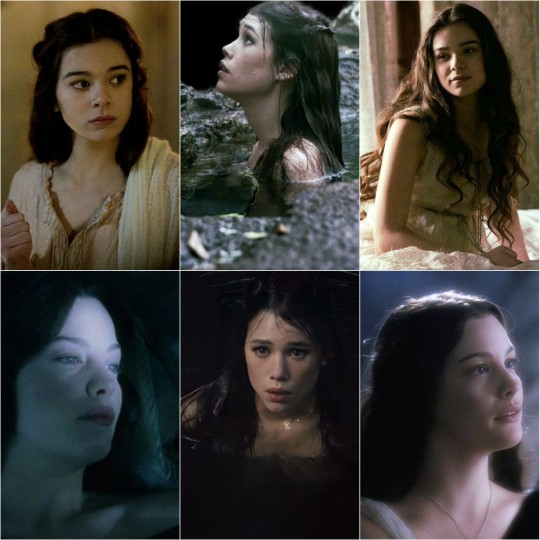

#vedic astrology#astrology#nakshatras#astrology observations#sidereal astrology#astro notes#astrology tumblr#bharani#purva phalguni#purva ashadha#venus#venus nakshatras#venusian nakshatras#planet venus#venus women
385 notes
·
View notes
Text
Aswini Nakshatra 🐎❤
Nakshatra ruler: Ketu 😌😃
Symbol: Horse 🐎💕
Ever wondered why people with the same star can be so different and their lives too? Here's a short intro to aswini nakshatra observations in all the four padas (Divisions). 🤧💙
This post is for your moon sign's nakshatra. Refer the planetary details table in your vedic chart, find out which pada your aswini moon falls in. Hope u enjoy the read! 🤩❤
General Observation🤗:
Aries people are short tempered and outgoing but Aries moons born in Aswini star are more reserved and focused into their own work. They rarely share their issues even with their best friends or close people. They usually have the habit of isolating themselves when things go wrong. They can be in a relationship with someone who is authoritative or famous in their field- Like a politician's sister or a famous company owner's close friend.
🧡Pada 1🧡
Pada 1 gets vargottama as the moon falls in the same aries house in d9 chart too. Individuals born in this pada can become surgeons, work in healthcare or in scientific research. Transport business can benefit them in gaining more money. Their parents could've suffered financial losses after their birth or their mom could've got sick. They generally avoid talking too much, they're much better listeners and answers back in single sentences. Their friends could get annoyed with them because of their isolating tendencies and one word answers.
💚Pada 2💚
Pada 2 aswini moon falls in Taurus in D9 chart. They're the most different among the people born in this star. They always keep themselves presentable, try to find more ways for multiple incomes, and can be self-centered at times. They love attention and compliments for their looks or dressing style, spend money on luxury or beauty products and often treat themselves to make themselves happy always lmao (like going to spa or buying chocolates for no reason). Their mom can be controlling, they love their mother so much and often have difficulty in disobeying or doing something opposite to their saying. They can obtain wealth or support from mom's side relatives. Food products, agriculture and makeup industry related businesses can be beneficial for them. They have a very sweet or flattering way of speaking and some people are talented singers too. Few of them can experience anxiety or a confused mental state where they have difficulty in making/sticking to a decision. (Sorry that I wrote comparatively more for this Pada, I just know more about this one lol).
💙Pada 3💙
I'm feeling sad for this pada. These people can undergo so many ups and downs in their lives from childhood. As the moon falls in Gemini in d9 for this pada, the moon is an enemy to Gemini's ruler mercury and the moon falls in the 12th house from its own house cancer, these natives face many struggles and can be mentally drained or exhausted most of the time. Their mom's side relatives won't be supportive and can possibly be involved in back biting. Very few people can even lose their mom at the end of ketu mahadasha (This doesn't necessarily have to mean de*th, it can also be separation), if other planetary placements are not positively aspecting the moon ( Don't take this to ur heart, whole chart must be analyzed before saying anything, this was just an observation). It is better to avoid business and to work in companies, you sure will reach a higher position. They're warriors, they come out successful in their career after facing lots of competition.
💗Pada 4💗
Moon falls in it's own sign in Cancer in d9 chart for this pada. They are blessed with a good education, they can even study up to a PhD or more than that. Their mom can be very affectionate, family oriented, protective and an epitome of embodying feminine qualities to the core. They are often seen as cheerful or bubbly, they have an unwavering mindset, not changing their decisions often. If they want to have a side business, they can try their hands on water related businesses like aquaculture or milk supply.
Note: People born with their moon in aswini nakshatra should check for the strength of their Venus placement. Venus Mahadasha (Major planetary period) is for 20 years and they will get it during their crucial age from school to career or sometimes till marriage. Hence if it's afflicted, their peak life stage can be with ups and downs. 😌💛
One more note: Please don't feel bad if you read any negative points. I do not want to sugarcoat/hide anything, at the same time, do not want to hurt anyone's feelings. We all have ups and downs, it's just one placement, your whole chart decides your fate, this is just for knowledge. *Sending positive vibezzz only* ❤😍❤

Feel free to comment down your thoughts/questions! 🤗
Let's Learn and Grow Together 💅💋
With Love- Yashi ❤⚡
Here's my Masterlist! 💖
#astrology#blogs#astro placements#birth chart#natal chart#astro observations#vedic astro observations#astro notes#astro community#planets#astrology aspects#astrology placements#astrology notes#vedic astro notes#vedic chart#vedic astrology#vedic astrology observations#ketu#moon#mars#mercury#venus#aries#aries moon#ashwini#nakshatras#constellations#astro blog#astroblr#astro girlies
114 notes
·
View notes
Text
ardras and crying as a remedy:💧

ardra, the sixth nakshatra, is symbolized by a teardrop and governed by the deity rudra. last week, i made a thread about how crying is good planetary remediation for anyone with ardra placements because of these associations !!
sidereal degrees: 6°40’ - 20°0’ gemini
tropical degrees: 0°31’ - 13°51’ cancer
planetary remediation is the practice of doing specific things to improve the function of the planets in your chart. if you have a planet in ardra, let yourself cry even if other people think it’s stupid
personally i have an ardra jupiter — with jupiter’s connection to film and acting, i like to let myself cry to movies, shows, etc. because the release feels good !!
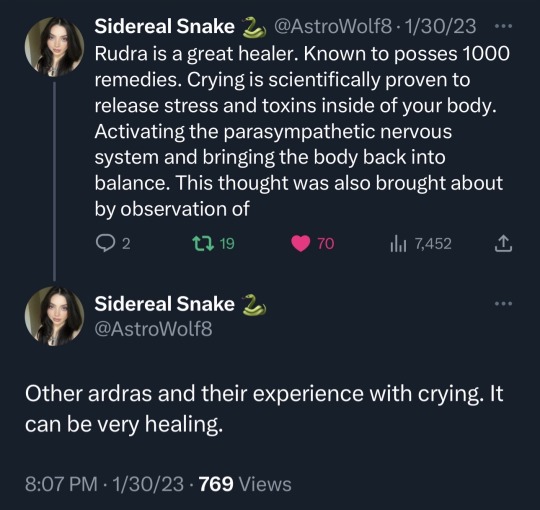
my thread was inspired by this wonderful post from @siderealsnake, who talks about rudra’s rulership over ardra and how crying pleases him as a divine healer. as she says here, rudra possesses 1000 remedies and crying is one of them
CRYING REMEDIES FOR PLANETS IN ARDRA:
the sun: while laughing, receiving praise or achievement
the moon: with family, during moments of vulnerability, before sleeping
mercury: while journaling, driving, reading, or studying
venus: while singing, dancing, creating art or music
mars: while working out, playing sports, during arguments, or when excited
jupiter: during movies or shows, while praying or giving offerings
saturn: with the elderly or authority figures, during funeral services
(what is planetary remediation ?)
book a reading !!
my linktree
#astro#astrology#astroblr#astro thoughts#astro community#planets#zodiac#zodiac signs#horoscope#ardra#ardra nakshatra#nakshatra#the nakshatras#the sun#the moon#mercury#venus#mars#jupiter#saturn#planetary remediation#trans astrologer#disabled astrologer#traditional astrology#vedic astrology
235 notes
·
View notes
Note
Heyy! So this is more like a doubt I have but, personally, do you think that if a planet is retrograde it affects the traits of its placement a lot in Vedic astrology? Like, I have Mars in Aries in 12th house, but it retrograde. I’ve noticed that whatever traits I���ve read of online, it’s not that prominent in me but more so hidden, like not visible to the outside maybe? I was wondering if it has something to do with planets being retrograde, and if its a major factor to consider while making predictions in Vedic chart😅😅
thanksss🫶
So intresting there's a lot misconceptions about Retrograde Planets and what I learned is that retrograde planet uses the resources of the previous zodiac and give results for the house where it is sitting. In your case your previous zodiac sign is Pisces therefore Aries Mars in 12 House will use the resources of 11th house Pisces and will give results of Aries Mars in 12th house. That's why the traits are not prominent or hidden which you feel as it's using Pisces resources already 12th house contains Pisces energy you see. And Retrograde Planets always have this High desire or intention to do things and with High desire comes mistakes. Therefore you'll do mistakes in the zodiac signs for which Mars becomes the Lord i.e Mars in 12 House Aries and Scorpio your 7th house as you're a Taurus Ascendant. Also you'll do work repeatedly in your 12 House. You may have a strong desire to move abroad as 12th house shows foreign but you'll do alot of mistakes and need to repeatedly do things for this particular desire. You have to work very hard same as Debilated planet people. If you have good placements in D9 chart then definitely you'll do better. Thank you so much 💖🫂
Radhey Radhey 🪷
#vedic astro observations#astrology blog#astrology observations#astrology readings#vedic chart#vedic astrology#vedic astro notes#vedic maths#srila prabhupada#bhakti#hare krishna#bhagavad gita#iskcon#astrology signs#astro observations#astro notes#astrology community#astrology#astro community#sidereal zodiac#sidereal virgo#sidereal chart#navamsa#darakaraka#sidereal pisces#sidereal astrology#nakshatra#retrograde planets#retrograde minis#Debilated planet
7 notes
·
View notes